Ingredients:
- 1 cup Kibbled Wheat
- 1 cup Mixed Wild Bird Seed
- 1 cup Vine Fruits, chopped
- 1 cup Flaked Maize
- 1 cup Chopped Nuts
- 1 cup Oatmeal
- 1 cup Oatmeal
- 225 grams Solid White Vegetable Fat
0 · ·
Ingredients:
1 · ·
Ingredients:
23 · ·
Ginger is a popular spice with a strong, pungent flavor. It is often used to add flavor to food or to help settle the stomach. But is ginger low in FODMAP?
The answer is yes, ginger is low FODMAP. This means that it is safe for people following a low FODMAP diet. Ginger is a good source of fiber and is also a natural anti-inflammatory.
So, if you are looking for a way to add flavor to your food without triggering your symptoms, ginger is a great option!
If you are following a low FODMAP diet, you may be wondering if you can include ginger in your diet. The answer is yes! Ginger is a low FODMAP food that is safe for people with IBS.
Ginger is often recommended as a natural remedy for nausea and vomiting, as well as other digestive issues like gas and bloating.
Not only is ginger low in FODMAP, but it is also a good source of fiber and is a natural anti-inflammatory. This makes it an excellent addition to any diet, but especially a low FODMAP diet.
If you want to add ginger to your diet, there are many ways to do it. You may either utilize it in food or ingest supplements. Ginger is a versatile spice that may be used in both sweet and savory dishes. It’s commonly utilized in Asian cuisine, but it can also be used in other cuisines such as in chicken curry.
Some people find that drinking ginger tea is a good way to get their daily dose of ginger. Ginger tea is easy to make and is a refreshing way to get your ginger fix.
If you are taking ginger in supplements, it is important to talk to your doctor first. Some supplements can interact with medications, so it is always best to check with your doctor before starting any new supplement.
Ginger is a popular spice with a strong, pungent flavor. It is often used to add flavor to food or to help settle the stomach. But did you know that ginger also has some impressive health benefits?
Ginger is a good source of fiber and is also a natural anti-inflammatory. This means that it can help to reduce inflammation in the body.
Ginger is often used to help settle the stomach and relieve nausea. Studies have shown that ginger is effective at reducing nausea and vomiting, especially in pregnant women.
Ginger has also been shown to be effective at reducing pain. One study showed that ginger was able to reduce knee pain in people with osteoarthritis.
So, if you are looking for a way to add flavor to your food or settle your stomach, ginger is a great option! And, because it is low FODMAP, it is safe for people following a low FODMAP diet.
Ginger is a natural stimulant of the digestive system. It is thought to help improve digestion by increasing stomach acid production and motility.
You can add ginger to food in many different ways.
Honey and ginger tea is the best way to treat a sore throat or a cold. It makes you feel better. For a few minutes, put a small slice of ginger in a cup of boiling water with a teaspoon of honey. Pour the liquid through a strainer into a cup to serve.
Ginger makes almost every dish taste better. Best are curries and sauces with a little bit of heat. You can make your sauce taste great by grating some fresh ginger into it while it’s cooking. Just try not to go too far. Ginger has a strong taste, so you only need a small amount for it to make a big difference.
Chicken that has been marinated in ginger is very tasty. It’s also very easy to understand! Put the chicken in a bowl and coat it with oil. Salt and pepper should be grated into the mix, and fresh ginger should also be grated in.
Coat the chicken well and put it in the fridge for at least an hour before you cook it. You can cook roasted chicken and enjoy it with your family.
If you like a smoothie in the morning, you can add ginger to make it taste better. It tastes good and is great for your body. Just make your smoothie as you normally would and add some freshly grated ginger. You can also add some fresh blueberries and some lemons.
Ginger cookies, gingerbread cakes, and more sweets! Ginger can be used in many ways and gives even the simplest dishes a wide range of flavors. Make some cookies with ginger and lemon for a change of pace.
Ginger recipes can be found in cookbooks or you can just add a bit of fresh or ground ginger to your regular low FODMAP baking recipes.
Ginger tea is still low in FODMAPs, especially when it is made from scratch. Ginger tea should be taken with care because it may be sweetened with honey or other syrups that are high in FODMAPs.
Ginger beer and ale are usually low in FODMAPs, but you should check the ingredients for high-FODMAP ingredients that often show up in carbonated drinks. We wrote a whole article about what to look for in fizzy drinks.
If you don’t have fresh ginger, a small amount of dried ginger that has been ground will do. As long as you eat smaller amounts, like half a teaspoon, you should be fine and able to get some of these great health benefits.
We hope you’ve enjoyed this article and that it has inspired you to give ginger a try. It is an amazing root with lots of health benefits.
Just remember, when incorporating ginger into your diet, stick to small portion sizes (1-2 inches or 2-3 cm) to minimize the risk of tummy trouble. And, if you are unsure about whether a food is low FODMAP or not, always check with a registered dietician or a FODMAP-trained gastroenterologist.
3 · ·
If you are following a low FODMAP diet, then you may be wondering if water chestnuts are low FODMAP. The answer is yes – water chestnuts are low FODMAP! This means that you can enjoy them without feeling sick or bloated. In this blog post, we will discuss the nutritional information for water chestnuts, as well as how to prepare them. We will also provide a few recipes for you to try!
Water chestnuts are a type of aquatic vegetable that is popular in many Asian cuisines. They are often used in stir-fries and soup dishes, and they can also be eaten raw or pickled. Chestnuts are a good source of fiber and vitamin C, as well as containing few calories and fat. They are also a good source of manganese, which is a mineral that is important for bone health. Additionally, water chestnuts are low in FODMAPs, making them a good option for people with digestive issues. However, water chestnuts are high in arsenic, so it is important to consume them in moderation. Overall, water chestnuts are a healthy addition to any diet.
Water chestnuts are a type of vegetable that is often used in Asian cuisine. They have a crisp texture and a slightly sweet taste and can be eaten raw or cooked. Water chestnuts are a good source of several minerals, including potassium, magnesium, and calcium.
Water chestnuts are available fresh, canned, or frozen. Freshwater chestnuts should be peeled before eating. To peel a freshwater chestnut, cut off the top and bottom with a knife. Use a vegetable peeler to remove the brown skin from the sides of the water chestnut. Canned water chestnuts are already peeled and can be eaten as is. Frozen water chestnuts can be thawed and then peeled before eating.
Water chestnuts can be added to stir-fries, soups, salads, and other dishes. They can also be eaten as a snack, either raw or roasted. To roast water chestnuts, place them on a baking sheet and bake at 400 degrees Fahrenheit for 15-20 minutes. Roasted water chestnuts can be eaten as is or dipped in sauce.
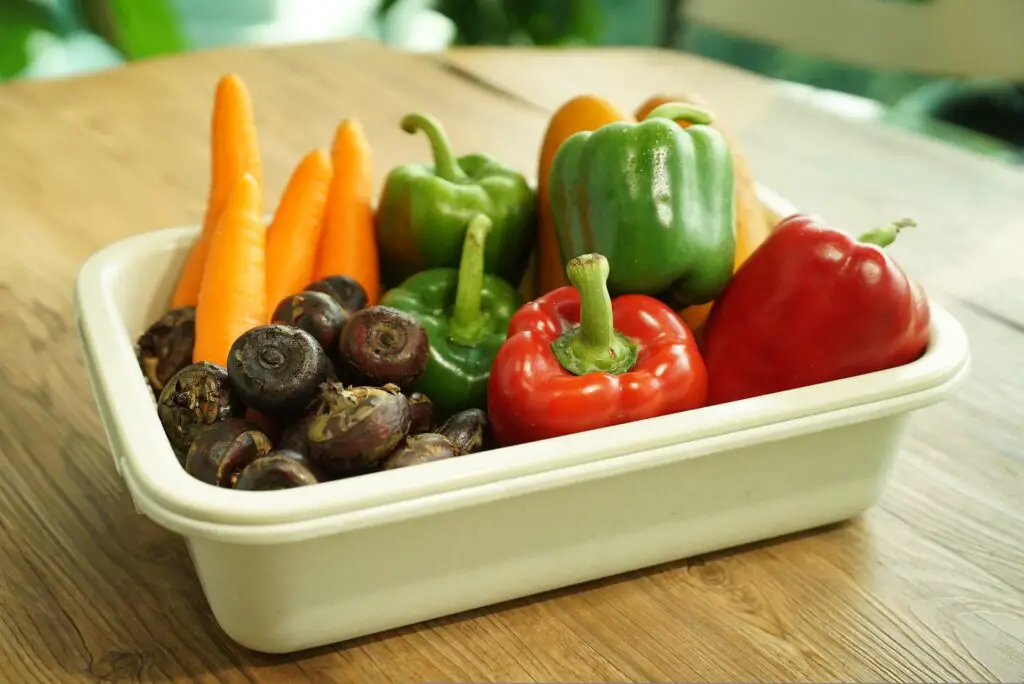
Water chestnuts are a type of aquatic vegetable that is popular in Asian cuisine. They are crunchy and have a slightly sweet taste. Water chestnuts are low in calories and are a good source of fiber. They can be eaten raw or cooked. Here are some recipes that feature water chestnuts:
Water chestnuts are a type of vegetable that is often used in Asian cuisine. They have a crunchy texture and a mildly sweet flavor. Water chestnuts are low in calories and fat, and they are a good source of fiber and Vitamin C. They are also a good source of manganese, which is a mineral that is necessary for bone health.
Some people with digestive disorders such as irritable bowel syndrome (IBS) may be on a low-FODMAP diet. This diet eliminates foods that are high in certain types of carbohydrates, including fructans, which are found in water chestnuts. However, research on the effects of the low-FODMAP diet is limited, and more studies are needed to determine whether or not water chestnuts are truly problematic for people with IBS. In the meantime, if you are on a low-FODMAP diet, you may want to avoid water chestnuts or eat them in small quantities. If you experience any digestive problems after eating water chestnuts, discontinue their use and speak with your doctor or dietitian.
Water chestnuts are a type of freshwater vegetable that has a crunchy texture and are often used in Asian cuisine. They are a good source of fiber, vitamins, and minerals, as well as being low in calories and fat. Water chestnuts are also a low FODMAP food, which means they are unlikely to cause digestive problems for people with IBS or other gastrointestinal disorders. Additionally, water chestnuts contain antioxidants that may help to protect against cancer and other diseases. So, if you’re looking for a healthy and delicious way to add some variety to your diet, give water chestnuts a try!

Water chestnuts are a type of aquatic plant that grows in marshes, rice paddies, and other wetland areas. The plant has long, slender leaves that emerge from the water and float on the surface. Water chestnuts are also known for their distinctive fruits, which are brown or black in color and have a smooth, glossy exterior. The interior of the fruit is white and crunchy, with a flavor that has been likened to that of raw almond. Water chestnuts are often used in Asian cuisine, as they are a good source of carbohydrates and add a crunchy texture to dishes. They are also low in fat and cholesterol, making them a healthy option for people who are trying to lose weight or improve their cardiovascular health. While water chestnuts are native to Asia, they are now grown in many parts of the world and are available year-round in most supermarkets.
Water chestnuts are a popular ingredient in Asian cuisine, and they are also great low-FODMAP food. However, they are only available fresh for a short time each year. The rest of the time, they must be stored properly to keep them fresh.
Water chestnuts should be stored in a cool, dry place. They will last for several months if stored this way. If you need to store them for longer than that, you can keep them in the refrigerator. Just be sure to put them in a plastic bag to prevent them from drying out.
When you are ready to use water chestnuts, just rinse them off and trim away any brown edges. Then, they are ready to add to your favorite recipe!
Read More;
2 · ·
If you are following a low FODMAP diet, you may be wondering if tangerines are low FODMAP. The answer is yes! Tangerines are low in FODMAPs and are a great snack choice for people on a low FODMAP diet. In this blog post, we will discuss the health benefits of tangerines and provide some tips for incorporating them into your diet.
For those with digestive sensitivities, choosing the right foods can be a real challenge. Foods that are high in FODMAPs are known to cause discomfort for many people, so it’s important to be mindful of what you’re eating. Tangerines are popular citrus fruit, but are they safe for those on a low FODMAP diet?
Tangerines are actually a great choice for those looking for a low FODMAP fruit option. This citrus fruit is low in fructose, which is the main type of sugar that is problematic for those with digestive sensitivities. Tangerines are also a good source of fiber, which can help to promote regularity and keep things moving along smoothly in the digestive tract. So if you’re looking for a delicious and nutritious low FODMAP fruit, tangerines are a great option to consider.
Tangerines are a type of citrus fruit that is popular for their sweet taste and easy-to-peel skin. Though they are often eaten as a snack or used as a flavor for food and beverages, tangerines have several other applications.
In traditional Chinese medicine, tangerines are used to support digestive health. They are also thought to have anti-inflammatory properties and be helpful in managing blood sugar levels. Tangerines are low in calories and a good source of fiber, vitamin C, and folate. They also contain flavonoids, which are plant-based compounds with antioxidant properties.
Tangerines are generally safe to eat and well tolerated by most people. However, some people with irritable bowel syndrome may find that they are triggered by food. This is because tangerines contain fructans, which are types of carbohydrates that can cause digestive discomfort in some people. If you are following a low FODMAP diet, it is best to avoid tangerines or eat them in small amounts. Overall, tangerines are a healthy and delicious fruit that offer many potential health benefits.

If you are looking for a delicious, low-FODMAP fruit to add to your diet, tangerines are a great option! Whether you enjoy them on your own as a healthy snack or use them as a flavorful addition to recipes, tangerines are a versatile fruit that can be enjoyed in many different ways. Here are some tips for incorporating tangerines into your diet:
Whatever way you choose to enjoy them, incorporating tangerines into your diet is a delicious and easy way to add more fruit to your meals!
Tangerines are a type of citrus fruit that is closely related to mandarins and oranges. They are a popular choice for snacking and are often used in desserts and cocktails. Tangerines are a good source of Vitamin C, which is essential for maintaining a healthy immune system. They are also low-FODMAP food, making them a good option for people with digestive issues. When shopping for tangerines, look for fruits that are heavy for their size and have glossy, orange skin. Avoid tangerines that are bruised or have wrinkled skin, as these can be an indication of age or damage. They can be stored at room temperature or in the refrigerator, and they will usually stay fresh for up to two weeks.
They are a good source of fiber. In one small tangerine, there are about 1.6 grams of fiber. This amount of fiber is important for keeping our digestive system regular and helping to prevent constipation. Tangerines are also a good source of vitamins C and A, both of which are important for maintaining a healthy immune system. Additionally, tangerines are a low FODMAP fruit, which means they are unlikely to trigger digestive issues in people with sensitive stomachs. So if you’re looking for a delicious and nutritious snack, reach for a tangerine!
Tangerines are a type of citrus fruit that are relatively small and have a deep orange color. They are often eaten as a snack or used in recipes because of their sweet taste. Tangerines are a good source of antioxidants, which are molecules that help to protect cells from damage. The antioxidants in tangerines can help to reduce the risk of some chronic diseases, such as heart disease and cancer. In addition, tangerines are a good source of fiber, vitamins A and C, and folate. They are also low in calories and fat. As a result, tangerines are a healthy choice for people who are trying to lose weight or maintain their weight.

Tangerines are a good source of potassium, which is an important electrolyte mineral. Low potassium levels can lead to problems such as muscle weakness, fatigue, and cramping. Tangerines are also a good source of dietary fiber, which is important for digestive health. Furthermore, tangerines are low in calories and are a good choice for people who are trying to lose weight or maintain a healthy weight. Additionally, tangerines are a good source of vitamin C, which is an important antioxidant. Vitamin C helps to boost the immune system and protect the body against free radicals.
Tangerines are a good source of folate, which is important for pregnant women to consume. Folate helps to prevent birth defects and is essential for cell growth. Tangerines are also a low-FODMAP food, meaning they are unlikely to trigger digestive issues in people with irritable bowel syndrome. In addition, tangerines are a good source of vitamin C, potassium, and fiber. They are also low in calories and sodium, making them a healthy choice for snacks or dessert. When choosing tangerines, look for fruits that are heavy for their size and have bright, orange skin. Avoid tangerines that are soft or have green patches, as these may be past their prime.
Tangerines are a type of citrus fruit that is popular for their sweet taste and easy-to-peel skin. While often thought of as orange, tangerines are actually a distinct variety of citrus fruit. One of the benefits of tangerines is that they are a good source of choline. Choline is an essential nutrient that helps to support cell membrane structure and plays a role in metabolism. While choline is found in many foods, tangerines are one of the few fruits that are a good source of this nutrient. Tangerines are also low in FODMAP, making them a safe choice for people with irritable bowel syndrome. When shopping for tangerines, look for fruits that are heavy for their size and have bright, orange skin. Tangerines can be enjoyed on their own or used in recipes such as salads, main dishes, or desserts.
Read More;
2 · ·
Blueberries are a fruit that is often considered to be low in FODMAP. This is because they are typically well tolerated by those with IBS and other digestive disorders. However, it is important to note that some people may still experience symptoms after eating blueberries. If you are concerned about your tolerance, it is best to speak with a registered dietitian or your doctor.
Blueberries are low in FODMAPS as long as certain serving sizes are kept in mind. You can safely eat these small berries if you have IBS as long as you don’t eat more than that amount at once. Also, blueberries have a lot of vitamins, minerals, and antioxidants. So, eating them can help prevent diseases and make your immune system stronger, among other health benefits.
Blueberries can be part of a low FODMAP diet, but the amount you eat is important. For example, you do not go over the FODMAP limit if you eat 14 cups (40 grams) of blueberries.
If you don’t have a problem with FODMAPs and can eat more of them, you can sometimes eat up to a cup (150 grams). This serving has a moderate amount of these carbs that can’t be broken down by the body.
But you should always start small to keep your stomach from having trouble.
Blueberries can be eaten on a low FODMAP diet, but only in small amounts. If you don’t eat more than 14 cups of blueberries per day, you can safely include them in an IBS-friendly diet.
If you are on a low FODMAP diet, you should eat fresh blueberries. This is important because the more FODMAPs a fruit has, the riper it is.
Most fruit juices don’t say how many FODMAPs they have. But since all fruits have fructose, which is a type of FODMAP, it seems likely that fruit juices also have a lot of these poorly absorbed carbs.
As a general rule, you should avoid fruit juices, especially if you are on a low FODMAP diet.
Depending on how they are canned, canned blueberries are high in FODMAPs, just like most canned foods. For example, blueberries that have been preserved in regular brine do not have more sugar than blueberries that have just been picked. So, they can be eaten in the same amount as when they were fresh.
On the other hand, many canned blueberries are full of high fructose and glucose syrup. IBS patients should avoid foods that are high in these two types of sugar because they are FODMAPs. So, you should always look at the list of ingredients to make sure the foods you buy don’t have any added sugars.
The classic blueberry muffin is a great way to start your day. This recipe uses almond flour, which is low in FODMAPs, to make a delicious and nutritious treat.
This recipe for blueberry almond crumble is the perfect dessert for those on a low FODMAP diet. It uses almond flour and fresh blueberries to create a delicious and healthy treat.
This blueberry sauce is the perfect topping for pancakes, waffles, or ice cream. It is made with fresh blueberries and is low in FODMAPs.
This blueberry smoothie is a refreshing and healthy drink that is perfect for a hot summer day. It is made with fresh blueberries and almond milk and is low in FODMAPs. You can also include a scoop of protein powder to make it a meal replacement.
Vitamin C is a water-soluble vitamin, meaning that our bodies don’t store it. Because of that, we need to get our daily dose from the foods we eat. This vitamin is important for many processes in our body, such as the production of collagen and the absorption of iron.
Blueberries are also known for their ability to boost our immune system. This vitamin helps our bodies fight off foreign invaders, such as bacteria and viruses. Including foods rich in vitamin C in your diet is especially important during cold and flu season.
Blueberries are also a great source of anthocyanins. These are plant compounds that have strong anti-inflammatory properties. Because of that, eating foods rich in anthocyanins is beneficial for people with conditions like inflammatory bowel disease (IBD), arthritis, and asthma.
Some studies suggest that blueberries can also help prevent cancer. This is because they’re rich in antioxidants, which are known to protect our cells from damage. Including blueberries in your diet is a great way to improve your overall health and well-being.
Blueberries are also a great source of antioxidants. These are compounds that protect our cells from damage.
Antioxidants are important for our health as they can help prevent various diseases, such as cancer and heart disease.
Blueberries are also a good source of fiber. This is important as fiber is essential for a healthy digestive system. Fiber also helps keep us feeling full after eating, which can be helpful for people who are trying to lose weight.
Blueberries are also a good source of iron. This mineral is important for our health as it helps carry oxygen in our blood. Iron is especially important for people who are pregnant or have anemia.
Blueberries are a nutritious and delicious fruit that can be enjoyed by everyone. While they are high in sugar, they are also low in FODMAPs. This makes them a great option for people with IBS.
Many delicious recipes can be made with blueberries, such as muffins, blueberry popsicle smoothies, and sauces. Blueberries are also a good source of vitamins and minerals, such as vitamin C, fiber, and iron. Including them in your diet is a fantastic approach to enhancing your general health and well-being.
Just remember to eat them in moderation as they are high in fructose. And, if you’re buying canned blueberries, make sure to check the ingredients label to ensure that they don’t contain any added sugars.
0 · ·
Our Low FODMAP Lemon Bars are made with a delicate, buttery crust (with a secret) baked to a golden brown and topped with tangy lemon filling. Classic lemon bars have been low FODMAP, gluten-free and lactose-free! I created numerous variations before settling on something that I believe is the best. Bake them now and see how they turn out!

The song “The Lemon Tree,” which I talk about in the essay, has strong lyrics: “The lemon tree is beautiful, and the lemon blossom is lovely, but the fruit of the poor lemon is indigestible.” Many GORD patients and IBS sufferers avoid citrus fruits due to their supposed reflux-aggravating properties. Citrus fruits, on the other hand, are allowed. I adore lemon; its zingy flavor is addictive and invigorating, but it has to be handled with care in recipes so that it does not taste like a well-known cold remedy.
The National Institute for Health and Clinical Excellence (NICE) does not advocate a decrease in citrus fruit intake as part of lifestyle GORD treatment, despite the fact that it is a component of NICE’s guideline on reflux. The primary emphasis of dietary lifestyle aspects is on reducing coffee, chocolate, alcohol, and fatty foods. Although the date of this lifestyle advice review is 2004. Which is somewhat outdated data, it is acceptable as no new findings have emerged.
It’s also worth noting that stomach acid pH (2-3), for lemon Juice, and not much different than the pH of gastric juices anyway, is very low. However, some individuals do express difficulties, so we take a personal approach to treatment by treating everyone as an individual and reducing them to a manageable level when necessary.
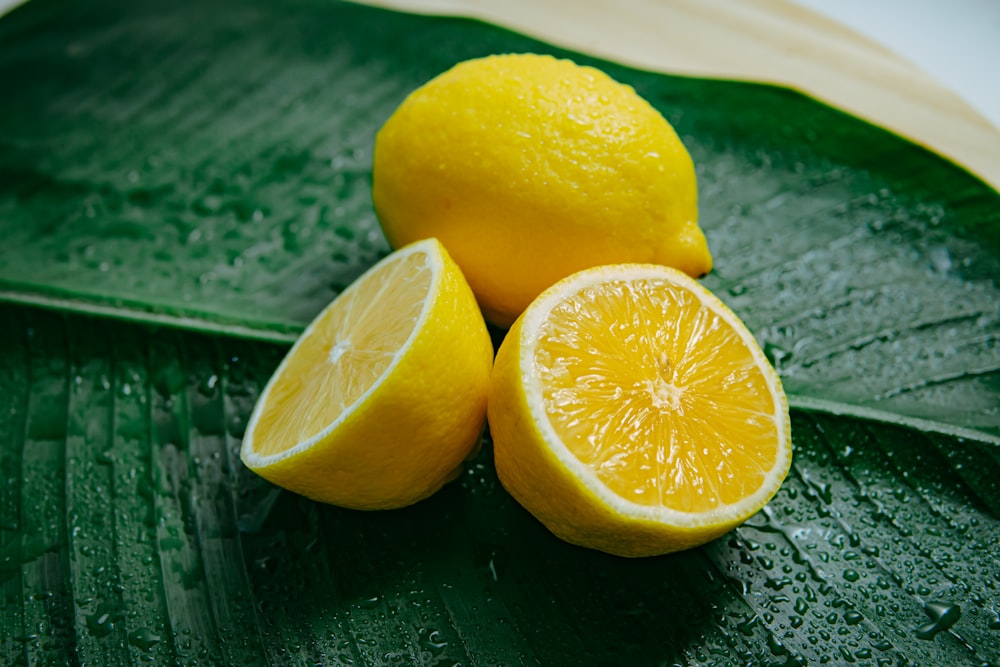
Acidic meals might decrease the quantity of vitamin C in the diet since ascorbic acid is present in greater amounts in citrus fruits. Vitamin C deficiency is uncommon throughout the United Kingdom, although it may be more prevalent due to fad diets like complete carnivore diets. Unlike other animals, our bodies are unable to produce it. According to some studies, low levels of vitamin C cause GORD; however, the consequences of deficiency range from skin damage to most likely the gastrointestinal (GI) tract, which has a fast cell turnover that is not helpful for people with sensitive stomachs.
The demand for vitamin C may be increased in individuals who have diarrhea, however, due to the risk of stomach cramps and excretion, it is recommended that vitamin C supplements above 3g/day (three times the amount of a typical over-the-counter supplement) are avoided. It is always better to get your nutrients from food rather than pills, so once your symptoms have gone away, resume eating the low FODMAP foods you have quit eating. You may be able to eat them after all if you try them again.
The key to this secret is xanthan gum. Let me explain. Many bars and desserts require a crisp, flaky, buttery shortbread-like crust, so you can imagine that I have made hundreds (thousands?) of them throughout the years while writing 17 books and running a bakery.
The problem is that when you are looking for a gluten-free version, the flavor and texture change considerably.
This 5-ingredient Low FODMAP Lemon Bar is a delicious, springtime treat with a shortbread-like crust and freshness of lemon flavor!
I ADORE lemon things! And, this Lemon Low FODMAP Bar recipe could take the gold! With a crumbly not-too-sweet shortbread-like crust and a tangy and pudding-style lemon top, this tasty bar screams springtime to me!
My favorite low FODMAP all-purpose flour is used to make the crust. This flour is adaptable, easy to get in most US supermarkets, and has helped me convert a lot of my preferred recipes into delectable FODMAP-friendly delicacies.
In this section, I have collected pertinent information for certain foods that are frequently asked about or have recommended low FODMAP serving sizes. We all have different tolerance levels and nutritional needs. Please trust your body (and, if possible, work with a FODMAP-trained dietitian). For additional low FODMAP serving sizes information, see the Monash FODMAP app and website or app.
The high FODMAP content of wheat flour has made it difficult for some people to tolerate. Gluten-free flours manufactured with rice, potato, or tapioca starch are low in FODMAPs up to ⅔ cup or 100 grams per serving.
Although this Bob’s Red Mill flour has not been specifically analyzed, it appears to be low FODMAP. It is also available across the country, and you’ll typically find it in the “health,” “natural,” or “gluten-free” aisles of your convenience store, as well as online.
To make the simple lemon bars, simply follow the recipe below.
Prep: Preheat the oven to 350°F. Butter or parchment paper on a 9×9-inch of baking pan.
Make the crust: In a mixing basin, combine ½ cup sugar and 1 ½ cups flour. Using a pastry blender, cut the butter into the flour mixture until it resembles coarse crumbs. Then add 3 tablespoons of water and mix well. (I have used a food-making processor before – pulsing ingredients crust together until they become crumbly.) Spread the dough across the bottom of the oiled pan.
Bake for 20-22 minutes, or until the crust is set and somewhat puffy. (Note: Gluten-free crusts do not usually brown like wheat-based crusts.)
Make the lemon topping: In a large bowl, whisk together the lemon juice, 1 1/2 cups sugar, and 3/4 cup flour until smooth. Pour evenly over the baked crust.
Remove the bars from the oven after 20-25 minutes and set them aside to cool. (I placed an oven mitt on top of my hand and gently shook the pan to see if the center no longer jiggles.) Allow baked lemon bars to cool to room temperature, for about 2 hours.
Serve Dust the top of each cake round with a little powdered sugar. Slice the cakes into 16 equal pieces and serve.
The biggest challenge was the texture of the finished product. Gluten-free flour mixes might frequently result in a very sandy and crumbly end product, but I learned that a little xanthan gum added to this type of old crust makes all the difference. That is my secret, and now I’m sharing it with everyone. The addition of xanthan gum ensures that the crust holds together perfectly, much like a wheat-flour-based shortbread crust.
Similar Articles
0 · ·
Is yogurt low fodmap? That is not the case. Despite the fact that yoghurt is a great source of protein and healthy addition to a balanced diet, it does, in fact, contain FODMAPs. Lactose is present in dairy yoghurt, which is a disaccharide and one of the D’s in FODMAPs.
However, do not give up yet! Most FODMAP sensitivity sufferers are not allergic to all types of FODMAPs and can tolerate up to a certain amount. As a result, if you are an Irritable Bowel Syndrome patient, it is critical to work with a nutritionist to determine your trigger kinds and amounts in order for you to determine how much or whether at all you should consume each type of FODMAP. Individuals vary in the amount of lactose they can take in, with some being able to consume more and some less. As a result, it is a widespread misconception that dairy must be avoided on a low FODMAP diet.
It is a good idea to include yoghurt in your daily diet if you can consume it. Natural or Greek-style yoghurts not only contain protein, but also calcium, potassium, zinc, and B vitamins. Yoghurt is also a natural source of probiotics, which help promote a healthy balance of beneficial bacteria in the digestive tract as a result of the fermentation process it goes through.
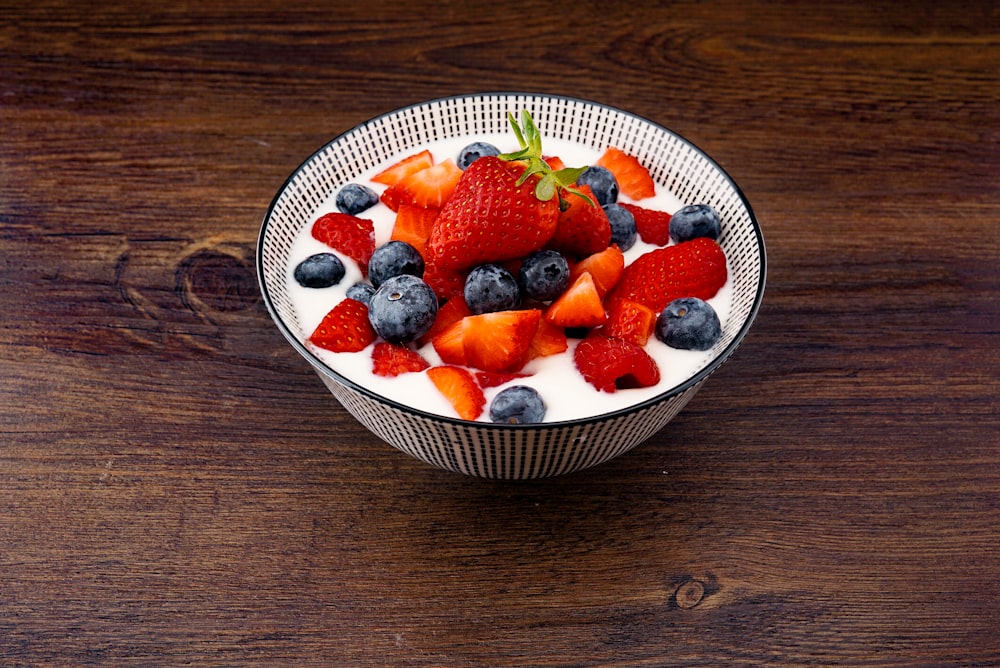
Lactose is a type of sugar present in most dairy products, including milk, yoghurt, and cheese. The enzyme lactase is needed to break down lactose in our small intestines so it can be absorbed. When we don’t have enough lactase in our small intestine to break down the lactose that we consume, we are suffering from lactose intolerance. When lactose isn’t digested and absorbed, it remains in the digestive system. It is fermented by bacteria in the large intestine and may cause stomach issues as a result.
The fifth group of FODMAPs is composed of lactose. Low-FODMAP diets are used by dietitians to help their clients determine whether any FODMAPs cause digestive issues. Lactose is one of the five types of FODMAPs. The low-FODMAP diet is employed by dietitians to assist their patients to identify which FODMAPs might be problematic for them.
Lactose is a carbohydrate found in milk and dairy products, including certain yoghurts. This is a double sugar that requires the enzyme lactase to be broken down before it can be absorbed. The amount of lactose that a person may consume comfortably is determined by the levels of lactase in the mucosa (lining) of their digestion system. If someone consumes or drinks more lactose than they can break down, the excess will remain in the digestive tract and be fermented by good bacteria living there. This produces gas as a side effect and contributes to bloating and abdominal discomfort. Lactose is also one of the FODMAPs that has been shown to draw water into the stomach and lead to diarrhoea.
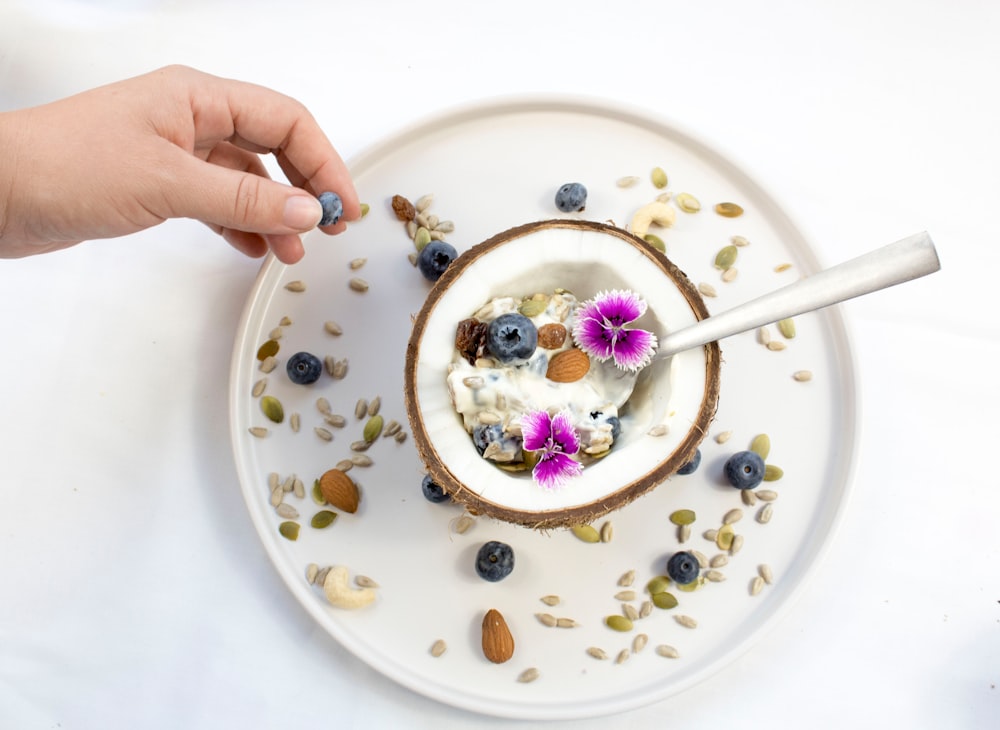
The final product of the fermentation process is yoghurt, which is created by introducing Lactobacillus bulgaricus and Streptococcus thermophilus to milk. Bacterial lactase is produced by these organisms, which converts lactose into lactic acid and gives fermented dairy products their distinctive tangy flavour and firm texture. The bacteria in yoghurt ferment the lactose, making it easier to digest. As a result of this fermentation, yoghurt’s lactose is reduced by 20-30%, compared to milk, and frequently tolerated better (less bloating, gas, abdominal discomfort, and diarrhoea). Finally, certain yoghurt brands include therapeutic microorganisms for their probiotic properties or digestive comfort.
Traditional Greek yoghurt differs from ordinary yoghurt in that it is subjected to additional treatment. After the traditional Greek yoghurt has been fermented, it is strained and the watery portion is discarded. The benefit of this approach is that when the watery whey is removed, a large percentage of the lactose goes with it. The result is a thicker and creamier yoghurt with more fat and less lactose. This can be observed on the nutrition label of a natural or plain Greek yoghurt. Which shows carbohydrates as generally around 4-6g/100ml.
Note: Do not be fooled by the “Greek-style” yoghurt, which does not go through the straining process to reduce lactose. It includes thickening agents instead of strainers since it is not strained.
The food industry is aware that many individuals are lactose intolerant. Therefore they are devising more and more lactose-free yoghurt alternatives. Making lactose-free yoghurt is quite easy. The manufacturers only have to add lactase, the enzyme that destroys lactose, and you have got a totally lactose-free yoghurt. If you are looking for a milk-free yoghurt, look for one that features “lactose-free” in the name. Lactose-free yoghurts are nearly indistinguishable from traditional yoghurts (they may be slightly sweeter).
If you have irritable bowel syndrome (IBS) symptoms that are triggered by disaccharides. Such as lactose, experts generally advise lactose-free yoghurt as a substitute. Without the bathroom issues, lactose-free yoghurt resembles natural or Greek-style yoghurt in terms of nutritional value. What is the process for making lactose-free yoghurt? Manufacturers include an enzyme called lactase, which cleaves down the lactose for you so your tummy does not have to! Although the human digestive system contains natural lactose, some individuals may make more or less of it. Liddell’s, Jalna, Vaalia, and Farmer’s Union are a few examples of popular yoghurt brands with alternatives that are lactose-free.
What about coconut yoghurt and soy yoghurt, which are both dairy-free? Nothing prevents you from including coconut yoghurt in your diet (hello, it is delicious). But keep in mind that compared to milk-based versions, coconut yoghurt is lower in protein and higher in energy and fat. Most supermarkets now sell coconut yoghurt in a variety of flavours, including Coyo, Cocobella, and Nakula. These companies produce both fruity and plain variants of their products; therefore, they can be used for sweet and savoury dishes alike.
Similarly, nut-milk based yoghurts may taste similar to cow’s milk yoghurts. But they have less protein and more energy and fat. While there’s nothing wrong with this. Keep in mind that these alternatives are not to be relied on as a protein-rich breakfast or snack addition! Nut-milk yoghurts are also far less popular, although if you’re curious about trying it out. So Delicious is a brand that is often available at major supermarkets.
Similar Articles
2 · ·
Stuffed peppers are a classic home-style meal, and there’s no reason we can not have a low FODMAP version of it. There are no FODMAPs in red bell peppers. Green peppers do, however; up to 52 g (about half of a medium green bell pepper) is considered an acceptable low FODMAP serving size. Personally, I prefer the taste and color of using red peppers for our reduced FODMAP recipe, and the Monash University serving size reflects their usage.
“Are yellow and orange peppers low FODMAP, like many other foods?” Because red and yellow peppers have not been evaluated for FODMAPs, no one knows their FODMAP content. Red and green cabbage contains different types of FODMAPs, as do yellow and white peaches, while red and green bell peppers have different amounts of fructans. We do not know what yellow and orange bell peppers are. If you are stable and in the Integration Phase of your low FODMAP diet, talk to your RD about them and go from there.
Any Foody with pasta sauce having a low FODMAP will do. We went with Arrabbiata, which was seasoned with additional heat from pepper jack cheese. You may use any low FODMAP cheese that can melt well, such as all Monterey Jack or mozzarella. Remember to stick to 50g or less with a low FODMAP serving size.

In this simple Stuffed Peppers recipe, bell peppers are filled with delicious ground spiced beef with Low FODMAP Seasoning of Taco and topped with a variety of colorful and fresh garnishes. It is ideal for a fun family dinner!
Peppers are low FODMAP and can be eaten by most people following the low FODMAP diet. Peppers, on the other hand, are high in capsaicin, a chemical that contributes to their spice. Capsaicin might be a non-FODMAP irritant for some individuals with IBS who react negatively to capsaicin.
As of September 2018, Monash University has not found FODMAPs in red bell peppers. Green bell peppers do contain FODMAPs. So, if you wish to include green peppers in your diet, consume only a half cup or 52 grams at a time. To my knowledge, yellow or orange bell peppers have not yet been evaluated because I can tolerate them (and they are entertaining) However, as of now (September 2018), red bells were not detected by Monash University.
So, in the elimination phase, if you have not tested your tolerance and are not completely sure whether or not red bell peppers are tolerated, I would advise sticking to them. Also, if you know or suspect that capsaicin is a culprit for your IBS, this dish is not recommended.

Preheat the oven to 350°F (180°C). Get an 8-inch (20 cm) square glass or ceramic baking dish ready.
Remove the stems and seeds from the peppers before cutting off their tops as near to the stem as possible. Remove any membranes or seeds. Place the peppers in a large pot with a steamer insert and 1 inch (2.5 cm) of water. Cover, bring to a boil, then lower the heat and simmer for 3 minutes. Remove the pan from the heat and carefully remove the peppers from it, placing them in an 8-inch (20 cm) square glass or ceramic baking dish. Toss together low FODMAP cheeses and set them aside.
Meanwhile, let the Fody olive oil heat in a large skillet over medium heat. Sauté the scallion carrot and greens for a couple of minutes until softened. Use some beef, breaking it up as you do so, and cook, and keep on stirring frequently, until nicely browned. If necessary, drain off the excess liquid (I usually do not). Rice is next; season with salt and pepper before adding 1 cup (240 ml) of Fody pasta sauce. Over medium heat, cook until heated through. Stir in just shy of one-quarter of the cheese (you can do this by eye).
Fill the peppers with beef and rice. Pour the remaining tomato sauce over the peppers. Cover them tightly with foil after that. Bake for 10 minutes. Uncover, top with additional cheese, and bake for another 10 minutes or until the cheese is melted. Serve immediately after cooking
I prefer steaming the peppers before adding the cheese, as I believe their texture improves. If you do not want to take the time, try cooking them for 20 minutes under a sheet of foil before removing it and adding the cheese. It will not be quite the same, but it might save you a step.
We are all unique, with different causes for our symptoms. Unfortunately, it is difficult to come up with recipes and broad strategies that work for every single person with IBS. This is why working with a FODMAP-expert dietician or healthcare professional is advised. Having more fun is a given, and this person can assist you in personalizing the FODMAP approach, discovering additional non-FODMAP causes, offering complementary solutions, and getting you where you want to be… of course!
Similar Articles
2 · ·
Pumpkins may continue to be on your culinary repertoire throughout the winter and even into the next fall, as long as you have access to fresh pumpkins. That doesn’t mean pumpkins have to go away when the pumpkin patches are blanketed in snow during the winter. These seeds, also known as pepitas, are a delicious and healthy snack.
These Pumpkin seeds are high in several vitamins and minerals, including protein, fiber, magnesium, and zinc. The following nutritional profile can be found in each serving of pumpkin seeds:
Pumpkin seeds are typically eaten rinsed and roasted. After the rinsed seeds have been patted dry, drizzle them with a little olive oil. Then roast the seeds in whatever method you choose.
Simply sprinkle on a little bit of sea salt if you prefer to keep things simple. However, if you want more taste, try using a low FODMAP spice like Casa de Sante’s Mexican seasoning mix. Finally, preheat the oven to 300 degrees Fahrenheit and spread the pumpkin seeds out in a single layer on a non-stick cookie.

Keep the low FODMAP roasted pumpkin seeds on hand to liven up your favorite meals! For further information, see the notes below.
Pumpkin seeds are next. Pumpkin seeds, as per Monash University, are low FODMAP in servings of 2 tbsp (23 g) per sitting. The FODMAP fructan limit is 4.5 tbsp (100 g).
2 tablespoons of this recipe per serving should be enough in the elimination stage. Once you’ve completed the re-challenge phase, see how many pumpkin seeds you can take in one sitting. If it’s too much for you at one time, this dish also makes a good autumn nibble. You’re ready to go after that!
For the sweet flavoring, we’ll use maple syrup. Maple syrup is low FODMAP in the serving size of 2 tbsp (60 g) per sitting on the Monash app, according to the manufacturer, but no maximum serving size is indicated for this meal.
According to the Monash University FODMAP blog, foods that aren’t restricted in the app may be eaten in huge amounts.
The remaining portion of our tasty components (olive oil, brown sugar, and cinnamon), however, are FODMAP-free. So you’re good to go there.
Do you want to see how many servings of each FODMAP category this recipe provides? Read the comments below to find out how many servings of each group there are in 2 tbsp of this dish.
Fructose = 0
Fructan = 1
Polyol = 0
Lactose = 0
GOS = 0
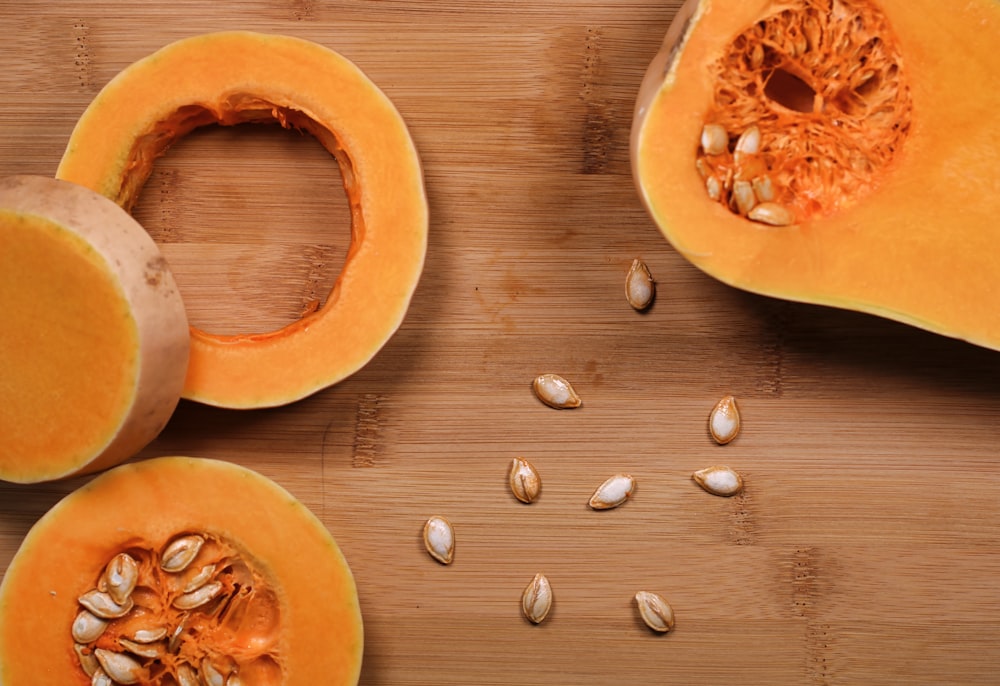
These salted caramel pumpkin seeds are highly convenient and a wonderful low FODMAP snack. I enjoy adding them to my low FODMAP porridge.
Keep reading for a bonus tip on how to make my favorite decorative centerpiece with your own hands. -> To get the most out of your seeds, soak them in water overnight before drying.
These are a wonderful way to boost protein and crunch to salads, scrambles, or even soups. You may also eat them plain or with other roasted nuts. Remember that with one low FODMAP serving size of pumpkin seeds is two Tablespoons, so don’t overdo it – despite how delicious they are!
INGREDIENTS:
Place 1 cup raw pumpkin seeds (without the shell – they should look GREEN, not WHITE) and 2 tablespoons extra virgin olive oil in a blender. Season with salt to taste.
DIRECTIONS:
Over medium heat, heat the oil. Stir in the pumpkin seeds and cook until all of them are coated with oil. Continue to stir frequently, especially after the seeds begin popping (you’ll hear them!), and begin to brown lightly until they’re crisp.
Remove the nuts from the oven and set them on a cooling rack that has been dusted with sea salt, if desired. They should be slightly browned at this point. Depending on how hot your stove is and how big your frying pan is, it’ll take between 3 and 5 minutes for all of the nuts to get properly browned.
Place the seeds in a food processor and chop finely. Remove from heat, stir in salt, then process until combined. Keep stirring until the popping and pan cooling stops to avoid burning the seeds on the hot surface. Allow cooling before storing for up to 2 weeks in an air-tight container.
Similar Articles
8 · ·
If you are following a low FODMAP diet, you may be wondering if egg noodles are low FODMAP. The answer is yes – egg noodles are low FODMAP. They are a great option for people who are looking for a gluten-free noodle that is also low in FODMAPs. In this blog post, we will discuss the nutritional information of egg noodles and provide some recipes that you can try using this versatile ingredient!
FODMAPs are a type of carbohydrate that is found in many common foods. They are made up of various sugars, including fructose, lactose, and sorbitol. FODMAPs are poorly absorbed by the gut, leading to gastrointestinal symptoms such as bloating, gas, and diarrhea. For people with irritable bowel syndrome (IBS), following a low-FODMAP diet can help to reduce symptoms. However, it is important to note that not all FODMAPs are equal. Egg noodles, for example, are low in FODMAPs and are unlikely to cause digestive distress. Therefore, if you are following a low-FODMAP diet, you can still enjoy egg noodles without worrying about triggering your symptoms.
Created by researchers at Monash University in Australia, the low FODMAP diet is a nutrition plan that helps to reduce symptoms of IBS. FODMAPs are a type of carbohydrate that is found in certain foods, and they are difficult for some people to digest. By following the low FODMAP diet, people with IBS can help to reduce their symptoms, including abdominal pain, bloating, gas, and diarrhea. The diet involves avoiding foods high in FODMAPs, such as wheat, onions, garlic, milk, and certain types of fruit. Instead, people on the diet eat foods that are low in FODMAPs, such as egg noodles, rice, meat, and vegetables. While the diet can be restrictive, it can also be very effective in reducing IBS symptoms.

Egg noodles are a type of pasta that is made from eggs, flour, and water. They are a common ingredient in Asian cuisine and are often used in soups and stir-fries. Egg noodles are also a popular choice for those on a low-FODMAP diet, as they are low in carbohydrates and do not contain any dairy or soy. However, it is essential to check the ingredients list on egg noodles, as some brands may add other high-FODMAP ingredients, such as garlic or onion. If you are following a low-FODMAP diet, be sure to choose egg noodles that are made with only eggs, flour, and water.
Egg noodles are a type of pasta made from flour, water, and eggs. They are long and thin and have a slightly chewy texture. Egg noodles are commonly used in Asian cuisine and are often found in soups and stir-fries. While egg noodles are delicious and versatile, many people are unsure about their nutritional content. Are egg noodles low fodmap?
The answer is yes! Egg noodles are low in Fodmaps, meaning they are safe for people who suffer from irritable bowel syndrome or other digestive disorders. In addition to being low Fodmap, egg noodles are also a good source of protein and vitamins B1 and B2. So if you’re looking for a delicious and nutritious pasta option, egg noodles are a great choice!
Egg noodles are a form of pasta prepared with flour, eggs, and water. They’re frequently used in Asian cooking, including lo mein and chow mein. Egg noodles are also a popular ingredient in soup recipes, as they are hearty and filling. Some people may be hesitant to use egg noodles, as they are unsure if they are low in FODMAP. However, egg noodles are actually considered to be a low FODMAP food. This means that they are safe for people who are following the low FODMAP diet to consume. If you are looking for some delicious recipes that use egg noodles, here are a few ideas to get you started.
As you can see, there are many different ways that you can use egg noodles in your cooking. Whether you are looking for a quick and easy meal or something more elaborate, egg noodles are a versatile ingredient that can be used in a variety of recipes.

Egg noodles are a versatile and delicious staple of many cuisines. They can be used in soups, stir-fries, casseroles, and more. While they are relatively easy to cook, there are a few things to keep in mind in order to ensure that they are properly cooked.
First, it is important to choose the right type of egg noodles. There are many different brands and varieties available, so it is important to read the labels carefully. Some egg noodles are made with different types of flour, which can affect their texture and flavor. For those on a low-FODMAP diet, it is important to choose egg noodles that are made with gluten-free flour.
Once you have selected the perfect egg noodles, it is time to start cooking! If you are using them in a soup or stew, they can simply be added to the pot along with the other ingredients. For stir-fries or casseroles, they should be boiled in water for 3-4 minutes before being added to the dish. No matter how you are using them, be sure to taste the egg noodles before serving to ensure that they are cooked through. With these tips in mind, cooking perfect egg noodles is easy.
Egg noodles are a type of pasta made from flour, eggs, and water. They are commonly used in Asian cuisine, and they can be found in a variety of shapes and sizes. When it comes to storage, egg noodles are best kept in a cool, dry place. If you are using them within a few days, they can be stored in an airtight container at room temperature.
For longer storage, egg noodles can be refrigerated for up to a week or frozen for up to six months. When cooked, egg noodles are typically boiled for three to four minutes. However, cooking times may vary depending on the size and thickness of the noodles. Egg noodles are also often stir-fried or used in soup. While they are deliciously cooked in many different ways, it is important to note that egg noodles are high in carbohydrates and should be avoided on a low-carb diet. Additionally, those with gluten sensitivities should check the label of egg noodles to ensure they are made with gluten-free ingredients.
Read More;
1 · ·
If you are following a low FODMAP diet, you may be wondering if pine nuts are a safe food to eat. In this blog post, we will answer that question for you! We will also discuss the nutritional benefits of pine nuts and provide some recipe ideas for incorporating them into your diet.
Delicious and nutritious, pine nuts are a versatile ingredient that can be used in sweet or savory dishes. But what are Pine nuts, and where do they come from?
Pine nuts are the edible seeds of certain species of pine trees. There are around 20 different species of pine trees that produce seeds that are large enough to be harvested, but the most common variety of pine nuts is the stone pine. Pine nuts are an excellent source of protein, vitamins, and minerals, and they are also low in carbohydrates.
Pine nuts are native to Europe, Asia, and North America, and they have been a part of the human diet for thousands of years. Archaeological evidence suggests that people were consuming pine nuts as far back as 18,000 BCE! In many cultures, pine nuts are still an important food source, and they are often gathered from wild trees. However, there is a growing demand for commercially grown pine nuts, as they are becoming increasingly popular in Western cuisine.
Whether you are looking for a nutritious snack or want to add a unique flavor to your cooking, pine nuts are a great option. And with so much history and variety, there is sure to be a type of pine nut that suits your needs.

For those with digestive sensitivities, following a low FODMAP diet can be a helpful way to manage symptoms. But with so many restrictions, it can be difficult to know what foods are safe to eat. So, are pine nuts low in FODMAP?
Pine nuts are a type of seed that is often used in cooking, as they have a mild, slightly sweet flavor. They are also a good source of nutrients like magnesium, phosphorus, and zinc. While most seeds are high in FODMAPs, pine nuts are actually low in fructans and galacto-oligosaccharides (GOS), making them safe for people following a low FODMAP diet.
However, it’s important to note that pine nuts can still cause digestive issues for some people. A small minority of people are sensitive to the carbohydrates in pine nuts, even though they are low in FODMAPs. If you find that you are sensitive to pine nuts, you may want to avoid them or limit your intake.
Overall, pine nuts are a safe food for most people following a low FODMAP diet. If you are sensitive to Pine Nuts carbohydrates, you may want to limit your intake or avoid them altogether.
Pine nuts are the edible seeds of pine trees, and they have been a part of the human diet for thousands of years. Today, they are prized for their rich, buttery flavor and their versatility in both sweet and savory dishes. But pine nuts are more than just a culinary delight – they are also an excellent source of nutrition. Pine nuts are a good source of protein, fiber, and healthy fats. They are also a rich source of vitamins and minerals, including vitamin E, magnesium, phosphorus, and manganese. In addition, pine nuts contain high levels of antioxidants, which can help to protect cells from damage caused by free radicals. Best of all, pine nuts are low in FODMAPs, making them an ideal food for people with digestive sensitivities. So whether you’re looking for a delicious addition to your favorite recipe or a nutritious snack to fuel your day, pine nuts are a perfect choice.
Are pine nuts low fodmap? The short answer is yes, pine nuts are low in FODMAPs and are therefore safe for people following a low FODMAP diet. Pine nuts are a good source of fat and protein, and they are also relatively high in fiber. This makes them a filling and satisfying food that can be enjoyed in small quantities as part of a low FODMAP diet. Pine nuts are also a versatile ingredient that can be used in sweet or savory dishes. For example, they can be used to make pesto or added to salads or vegetable stir-fries. If you are following a low FODMAP diet, be sure to check labels carefully as some processed foods may contain high FODMAP ingredients such as garlic or onion powder. But overall, pine nuts are a great addition to a healthy, low FODMAP diet.
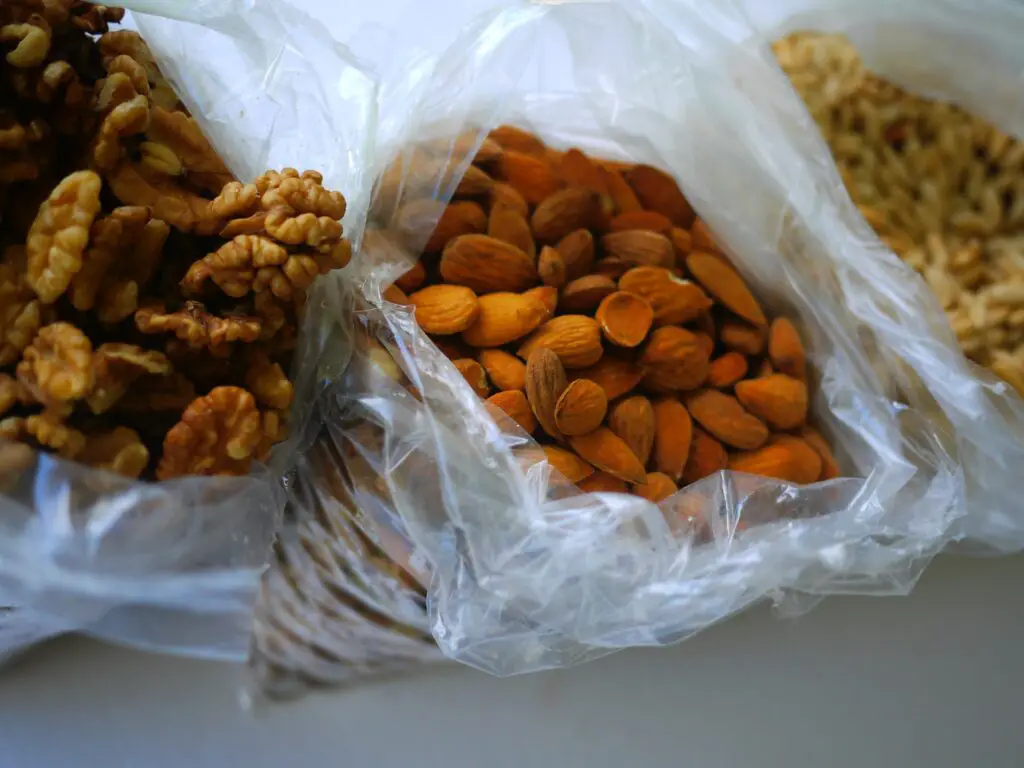
Although often thought of as a fancy ingredient, pine nuts are actually quite versatile and can be easily incorporated into your diet. They can be used in sweet or savory dishes and their mild flavor pairs well with a variety of other ingredients. Pine nuts are also a good source of vitamins and minerals, including iron, magnesium, and zinc. In addition, they contain heart-healthy fats and antioxidants that can help to protect against disease. So next time you’re looking for a healthy way to add some flavor to your meal, reach for a handful of pine nuts.
People with irritable bowel syndrome (IBS) often have difficulty digesting certain types of carbohydrates. The low FODMAP diet is a way of eating that eliminates many of these difficult-to-digest carbs. Pine nuts are a great source of nutrition for people following the low FODMAP diet. They are a good source of protein and fat, and they are also low in FODMAPs. Pine nuts can be used in a variety of recipes, including pesto, granola, and muffins. They can also be added to salads and main dishes for an extra boost of flavor and nutrition. When shopping for pine nuts, look for products that are labeled “low FODMAP.” This will ensure that you are getting the most gut-friendly product possible.
The low FODMAP diet has become a popular treatment for digestive disorders like irritable bowel syndrome (IBS). The diet involves avoiding foods that contain certain types of carbohydrates, including fructose, lactose, and fructans. One food that contains all three of these carbohydrates is pine nuts. For this reason, pine nuts are often avoided on the low FODMAP diet. However, there is some evidence to suggest that pine nuts may not be as problematic as other high-FODMAP foods. One study found that only a small percentage of people with IBS experienced symptoms after eating pine nuts. Furthermore, the symptoms that were reported were generally mild. This suggests that pine nuts may be better tolerated than other high-FODMAP foods. Consequently, pine nuts may be worth considering for people who are following the low FODMAP diet.
Interesting;
0 · ·
Is turkey low FODMAP? The answer is yes, turkey is a low FODMAP food. It is important to know which foods are low in FODMAP and which ones are not, especially if you are on a restricted diet. There are many different foods that are considered low FODMAP, and turkey is one of them. In this blog post, we will discuss the benefits of eating turkey and how it can help you stay on track with your diet goals.
Turkey is a popular Thanksgiving dish, but many people with gastrointestinal disorders such as irritable bowel syndrome (IBS) may be wondering if it is safe for them to eat. The good news is that turkey is generally low in FODMAPs, which are a group of short-chain carbohydrates that can cause digestive distress.
However, it is important to be aware that the way the turkey is prepared can affect its FODMAP content. For example, stuffing is often made with high-FODMAP ingredients such as onion and garlic, so it is best to avoid this if you are following a low-FODMAP diet. Additionally, turkey skin is also high in FODMAPs, so it is best to remove it before eating. With a few simple modifications, you can enjoy turkey without triggering your IBS symptoms.
Turkey is a versatile and delicious addition to any diet, and it offers numerous health benefits. For one, turkey is an excellent source of protein. It is also low in fat and cholesterol, making it a healthy option for those looking to lose weight or improve their cardiovascular health. Additionally, turkey is rich in vitamins and minerals, including B vitamins, zinc, and iron. And perhaps best of all, turkey is low in FODMAPs, making it a great option for those with digestive issues. So whether you’re looking for a healthy source of protein or an easy way to reduce your FODMAP intake, turkey is a great choice.

Turkey is a lean protein that is low in fat and calories, making it a great option for those trying to lose weight or maintain their current weight. Turkey is also a good source of vitamins and minerals, including zinc and vitamin B6. Additionally, turkey is a low-FODMAP food, meaning it is unlikely to cause digestive issues for those with sensitive stomachs. When looking for turkey products, be sure to choose ones that are minimally processed and free of added salt, fat, and preservatives. When cooked correctly, turkey is flavorful and satisfying, making it an excellent addition to any healthy diet.
For those with IBS, following a low FODMAP diet can be a helpful way to manage symptoms. However, it can be difficult to figure out what foods are safe to eat. While there is no definitive list of low FODMAP foods, there are some general guidelines that can be helpful.
In general, foods that are high in fiber, protein, and healthy fats are low in FODMAPs. This means that meats, poultry, fish, eggs, and nuts are all good options. Additionally, most vegetables and fruits are also low in FODMAPs. However, there are a few exceptions, such as wheat, legumes, and certain types of fruit. If you’re unsure whether a food is safe to eat on a low FODMAP diet, it’s always best to check with a registered dietitian or your doctor.
For those with gastrointestinal issues, following a restricted diet is often necessary in order to minimize symptoms. However, this can sometimes make it difficult to get all the nutrients your body needs. If you are on a restricted diet, there are a few things you can do to make sure you are getting enough nutrients.
First, pay attention to food labels and make an effort to choose products that are high in nutrients. Second, talk to a registered dietitian or nutritionist who can help you create a meal plan that meets your needs. Finally, remember that diet is only one part of a healthy lifestyle; be sure to also get enough exercise and rest. By taking these steps, you can ensure that you are getting the nutrients your body needs even if you are on a restricted diet.

A low FODMAP diet is a meal plan that limits foods that contain certain short-chain carbohydrates (such as fructans, fructose, lactose, and Galatians). The diet is often recommended for people with irritable bowel syndrome (IBS) and other digestive disorders.
While the diet can be effective for reducing symptoms, there is some concern that it may also lead to nutrient deficiencies and other health problems. For example, the diet eliminates many fruits and vegetables, which are good sources of vitamins, minerals, and fiber. The diet is also very restrictive and can be difficult to follow long-term. As a result, people who follow a low FODMAP diet should work closely with a registered dietitian to make sure they are getting all the nutrients they need.
If you think you may have a food intolerance, the first step is to speak to your doctor. They can run tests to determine whether you have an allergy or intolerance and help you to identify which foods are causing problems. In the meantime, there are some things you can do to ease your symptoms.
Avoiding the offending food is the best way to prevent symptoms, but that is not always possible or practical. If you cannot avoid the food completely, try to eat small amounts and pair it with other foods that can help to offset the reaction. For example, is turkey low fodmap? Foods that are high in fat or protein can help to slow down the absorption of the offending food and reduce the severity of symptoms. If you suspect you have a food intolerance, changing your diet is the best way to find relief.
The low FODMAP diet is a newer approach to treating gastrointestinal disorders like irritable bowel syndrome (IBS). The diet is based on the premise that certain carbohydrates can trigger symptoms like bloating, gas, and diarrhea. By avoiding foods that contain these carbohydrates, known as FODMAPs, IBS sufferers can find relief from their symptoms.
But can the low FODMAP diet be used to treat other conditions? Some research suggests that the diet may also be effective for managing other gastrointestinal disorders, such as inflammatory bowel disease (IBD) and Crohn’s disease. In addition, the low FODMAP diet has been shown to improve gut microbiome health in healthy adults. While more research is needed to confirm these findings, the low FODMAP diet is a promising approach for treating a variety of gastrointestinal conditions.
Read More;
2 · ·
You may be wondering if palm oil is low in FODMAP. The answer is yes, palm oil is low FODMAP. However, it is important to note that not all palm oils are created equal. Some brands of palm oil may contain high levels of FODMAPs, so it is important to read the label carefully. In this blog post, we will discuss the benefits of palm oil and provide a list of some of the best low FODMAP-friendly brands available on the market.
Coconut oil is a popular moisturizer derived from the seeds of palm trees. It’s a reddish-orange liquid with a high ratio of saturated fat, which is often used in prepared meals. Palm oil has a number of benefits, including the fact that it is low in fodmap. Fodmap is a type of carbohydrate that is difficult for the body to digest, and it can cause digestive problems like gas and bloat. Palm oil is also a good source of vitamin E, which is an important nutrient for healthy skin and hair. In addition, palm oil is relatively affordable and widely available. As a result, it is an increasingly popular choice for those looking for healthy, affordable vegetable oil.
Palm oil is a type of vegetable oil that is made from the fruit of the palm tree. It is a popular ingredient in many savory and sweet dishes, as well as a common component of cosmetics and skincare products. Palm oil is low in FODMAPs, making it an ideal choice for people with digestive issues. FODMAPs are a group of carbohydrates that are difficult to digest, and they are found in many common foods such as wheat, onions, and garlic. When FODMAPs are not properly broken down, they can cause gas, bloating, and other digestive problems. Palm oil is low in FODMAPs because it is broken down more easily by the body. This makes it a safer choice for people with IBS or other digestive disorders.
Palm oil is a vegetable oil derived from the fruit of the oil palm tree. It’s frequently used in cooking oils, margarine, and processed foods. While palm oil is high in saturated fats, it is also a source of beneficial fatty acids, such as lauric acid. For this reason, palm oil has become a popular ingredient in many low-FODMAP foods.

However, not all palm oil is created equal. Some brands of palm oil are refined using chemicals and other processes that can make the oil more difficult to digest. For people with IBS or other digestive disorders, it is important to read labels carefully to find brands of palm oil that are low-FODMAP and easy to digest. Additionally, some brands of palm oil are sustainably sourced, while others are not. Sustainably sourced palm oil is produced in a way that minimizes the impact on the environment and the local community. When choosing a brand of palm oil, it is important to consider both the FODMAP content and the sustainability of the product.
If you’re following a low FODMAP diet, you know that finding food that doesn’t trigger your symptoms can be a challenge. But there are some great brands out there that make low FODMAP-friendly products. Here are some of the best:
Palm oil is a type of vegetable oil that is derived from the fruit of the palm tree. It is commonly used in Southeast Asian and African cuisine and is becoming increasingly popular in the Western world. palm oil is low fodmap It is a versatile ingredient that can be used for frying, baking, or as a salad dressing. Palm oil has a high smoke point, which makes it ideal for cooking at high temperatures. It also has a distinctive flavor that can add depth to your dishes. If you’re looking to add palm oil to your cooking, here are some tips.
When cooking with palm oil, it’s important to remember that a little goes a long way. Because it is such a dense oil, it can easily overwhelm other flavors if you use too much. Start with a small amount and gradually increase it until you reach the desired flavor. Another thing to keep in mind is that palm oil can solidify at cooler temperatures. If this happens, simply place the container in warm water until the oil liquefies again. With these tips in mind, you’ll be able to successfully incorporate palm oil into your cooking!

Palm oil is a plant-based edible oil extracted from the fruit of the oil palm tree. It is commonly used in a variety of food applications, including baking, frying, and as a flavor enhancer. Palm oil is also a source of carotenes, vitamin E, and tocotrienols. Despite its popularity, there is some controversy surrounding palm oil due to its high saturated fat content. However, recent studies have shown that palm oil is not associated with an increased risk of cardiovascular disease. As such, it is considered to be a healthy option for cooking. Here are some delicious recipes that feature palm oil:
As you can see, there are many different ways to use palm oil in your cooking. Whether you’re looking for a healthy option for frying or want to add some depth of flavor to your dishes, palm oil is a great choice. Give it a try in one of the recipes above and see for yourself!
4 · ·
If you are following a low FODMAP diet, you may be wondering if bok choy is a safe food to eat. Bok choy is a type of Chinese cabbage that is often used in stir-fries and soups. It is high in vitamins A and C, as well as folate and potassium. Bok choy is also a good source of dietary fiber. So is bok choy low FODMAP? Let’s take a closer look.
Bok choi, Brassica rapa subsp. Chinensis is a type of Chinese cabbage. The leaves are crispy and the stalks are crunchy. Bok choy is a cool-weather vegetable that is typically harvested in the fall or winter. The Chinese name for bok choy is “Xia district” which means “small greens” because of its small leaves. It is also known as white cabbage, pak choi, and celery cabbage. Bok choy is a low-FODMAP food, which means it is safe to eat for people with irritable bowel syndrome (IBS).
The low-FODMAP diet is designed to minimize symptoms of IBS. Avoid foods that are high in fermentable carbohydrates, disaccharides, monosaccharides, and polyols (FODMAPs). IBS patients are sensitive to certain short-chain carbohydrates, which can cause bloating, gas, abdominal discomfort, and diarrhea. Some studies have shown that the low-FODMAP diet can help to improve symptoms of IBS. If you have IBS, talk to your doctor or a registered dietitian before starting the diet.
Bok choy is a type of Chinese cabbage. It is light green in color and has a mild, slightly sweet flavor. Bok choy is an excellent source of vitamins A, C, and K. It is also a good source of calcium and iron. You can eat bok choy raw or cooked. It is often used in stir-fries, soups, and salads. Bok choy is low in calories and fat. One cup (100 grams) of cooked bok choy contains just 33 calories and 2 grams of fat. It is also a good source of fiber. This means it can help you feel full after eating and may aid weight loss.
Additionally, bok choy is low in FODMAPs. This makes it an ideal food for people with IBS or other digestive disorders. While bok choy is generally safe to eat, some people may experience gas or bloating after consuming it. If this occurs, you should avoid eating large amounts of bok choy or limit your intake to small amounts.

Is bok choy low fodmap; is a question that is commonly asked. Bok choy is a type of Chinese cabbage that is part of the Brassica family, which also includes broccoli, kale, and Brussels sprouts. The vegetable is dark green and has white stalks. It is a good source of vitamins A, C, and K, as well as calcium, manganese, and potassium. Bok choy is also a low-calorie food, with only 9 calories per cup.
There are many health benefits associated with eating bok choy. The vegetable is believed to protect against cancer, due to its high levels of antioxidants and phytochemicals. It is also thought to help lower cholesterol levels and reduce the risk of heart disease. Additionally, bok choy may help to regulate blood sugar levels and boost brain health. These effects are likely due to the presence of nutrients such as vitamin C, beta-carotene, and lutein in bok choy.
Due to its many health benefits, bok choy is considered a superfood. However, some people need to limit their intake of vegetables due to their content of FODMAPs. FODMAPs are short-chain carbohydrates that can be poorly absorbed in the gastrointestinal tract. This can lead to symptoms such as bloating, gas, and abdominal pain. If you have IBS or another digestive disorder, it is important to speak to your doctor or a registered dietitian before including bok choy in your diet.
While bok choy is generally safe to eat, some people may experience side effects after consuming it. These side effects include gas, bloating, and abdominal pain. If you experience these symptoms, you should avoid eating large amounts of bok choy or limit your intake to small amounts.
Bok choy is a healthy vegetable that is low in calories and fat. It is also a good source of vitamins, minerals, and fiber. Additionally, bok choy is low in FODMAPs, making it an ideal food for people with IBS or other digestive disorders. However, some people may experience side effects after eating bok choy. If you experience these symptoms, you should limit your intake of vegetables.
The low FODMAP diet is a diet that is used to help manage symptoms of irritable bowel syndrome (IBS). IBS is a condition that affects the gastrointestinal tract and is characterized by abdominal pain, bloating, gas, diarrhea, and constipation. The precise reason for IBS is unknown, although it is thought to be connected to a sensitivity to certain carbohydrates.
The low FODMAP diet is intended to help you feel better by eliminating foods that contain high amounts of FODMAPs. The diet typically includes avoiding high-FODMAP foods for a period of time, followed by slowly reintroducing them one at a time to see how the body reacts. While the low FODMAP diet can be effective for some people, it is important to work with a Registered Dietitian Nutritionist (RDN) before starting the diet to make sure it is appropriate for you and to ensure that you are getting all the nutrients you need.

Bok choy is a type of Chinese cabbage that is often used in stir-fries and soups. It is a member of the cruciferous vegetable family, which also includes broccoli, Brussels sprouts, and kale. Bok choy is a good source of vitamins A and C, as well as calcium and iron. For people with digestive problems, it is important to choose foods that are low in FODMAPs. FODMAPs are a group of short-chain carbohydrates that are poorly absorbed by the gut.
They can cause digestive symptoms like bloating, gas, and diarrhea. Bok choy is generally considered to be a low FODMAP food. This means that it is unlikely to cause digestive problems for people with sensitive guts. However, some people may find that they tolerate bok choy better than other cruciferous vegetables. If you are following a low FODMAP diet, it is important to speak to a registered dietitian to ensure that you are getting enough nutrients.
Bok choy is a type of Chinese cabbage that is often used in stir-fry dishes. It is low in fodmap, making it a good option for those who are on a Low Fodmap diet. Bok choy is also a good source of vitamins A and C, as well as antioxidants. Stir-frying is the most popular way to cook bok choy, but it can also be steamed, roasted, or added to soups. When stir-frying, it is important to cut the bok choy into uniform pieces so that it cooks evenly. The best way to do this is to cut the leaves in half lengthwise and then slice them crosswise into ½-inch strips. Once the bok choy is cooked, it can be served with rice or noodles and topped with sauce or spices of your choice.
Read More;
7 · ·
Due to their high FODMAP content, people on a low-FODMAP diet should avoid eating beets. Even though it’s okay to eat a small number of beets, it can be hard to limit yourself to that amount.
Therefore, you should introduce new foods to your diet gradually. On a low FODMAP diet, you should limit your consumption of beets because they are one of the vegetables with high FODMAP content.
However, if you can consume beets, there are numerous health benefits. For example, beets are rich in folate, potassium, manganese, and fiber.
Beets, also known as beetroot, have an earthy flavor that complements salads and other foods. Even cakes can be made with these ingredients. These vegetables are also rich in nutrients that are beneficial to health.
People believe that if included in a healthy diet, they can help reduce blood pressure and even fight cancer.
During the elimination phase of a low FODMAP diet, giving up root vegetables like beets can be challenging. They are typically sweet and high in carbohydrates, but they are so nutritious that it would be foolish not to consume them.
Beetroot contains oligos, which are chains of sugar, and beetroot is rich in oligos, which makes it an unhealthy food. Because beetroot contains a great deal of these natural sugars, it is a high FODMAP food.
You can include beetroot in your diet if you limit your caloric intake.
Four slices constitute a traditional serving of beetroot, which is considered high in FODMAPs. If you want to eat beetroot, you need to cut down on the amount you eat to make it low in FODMAP.
Just consume two pieces of approximately 20 grams each, and you’ll be fine.
Only 37 calories are contained in a 12-cup serving of beets. These calories are primarily derived from sugar and fiber, which are both forms of carbohydrates.
Due to their low sugar content, beets can aid in weight loss.
Folate is one of the nutrients present in abundance in beets. This micronutrient, also known as vitamin B9, is essential for the production of red blood cells. Additionally, it reduces the likelihood of brain and spine birth defects.
Numerous beneficial plant compounds in beets reduce inflammation and protect cells from damage. Additionally, beets are healthy in the following ways:
Beetroot and its juice improve heart and lung function during exercise. Beets produce nitric oxide, which increases blood flow to the muscles. Some athletes consume beets or beet juice while exercising to improve their performance.
Folate (vitamin B9), which is abundant in beets, promotes cell growth and function. Folate is needed to keep blood vessels from getting damaged, which lowers the risk of heart disease and stroke.
The body converts the nitrates found in beets into nitric oxide. This substance reduces blood pressure by relaxing and widening blood vessels.
Beets are high in fiber and promote the growth of beneficial bacteria in the digestive tract. Beneficial bacteria in your digestive system can help prevent illness and strengthen your immune system. Fiber helps the body break down food and also helps digestion and keeps you from getting constipated.
Folate, a vitamin that maintains healthy blood vessels, and potassium, a mineral that maintains a healthy heart, are both present in beets.
Beetroot is one of those vegetables that people either love or hate due to its difficulty in preparation. There is no need for concern because we have some ideas.

Cooked and cooled beets have a natural sweetness that is balanced by their earthy flavor. As a result, it’s ideal for salads. To make your salad last longer, grate your small amount of beetroot and combine it with the remaining salad ingredients.
Additionally, you can cut it into small cubes and use them as a delicious garnish.
You can use the dip as a sauce, as a dipping sauce for your favorite dipping vegetables, or as a meat or fish marinade.
Historically, beets were included in the classic recipe for red velvet cake. Unfortunately, red food coloring is more popular now, but beets can be used to make a naturally moist and delicious traditional cake.
If you add grated beetroot to your omelets, you will have a nutritious and beneficial lunch. To add a little flavor, include some bacon. There is nothing more satisfying than a lunch of bacon and beetroot omelets.
A full serving of fresh beetroot, which is four slices, is high in FODMAPs because it has a lot of oligo-fructans, which are short-chain carbohydrates that feed gut bacteria and may cause gastrointestinal distress.
A half serving of fresh beetroot, which is 34 ounces or two slices, is low in oligo-fructans, making it FODMAP-friendly (FODMAPs).
Two slices or one-half of a cooked beetroot are low in FODMAPs (34.4 oz.). Even though more research needs to be done to figure out why cooked beetroot is safe, Monash University thinks that the high temperature helps break down FODMAPs.
Likewise, 12 cups of pickled beets contain a few FODMAPs. Because the fructans in the beetroot leach into the vinegar solution, the acidic environment, and long pickling process, which is similar to how beets are canned, lower the FODMAP content.
This can’t be said easily. If you include garlic and onion in the hummus, it will become high in FODMAP. The optimal course of action is to prepare your beet hummus.
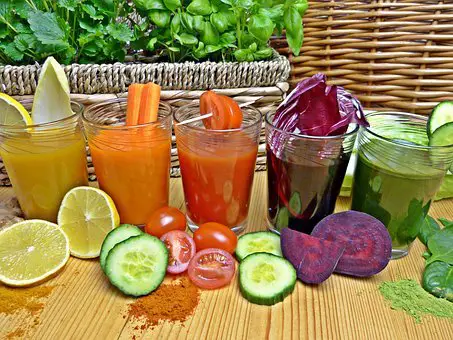
Beet juice has a low FODMAP content when it is drunk in small amounts and not mixed with other drinks.
Determine if there are any additional ingredients. This is crucial because beet juice typically contains apple juice, which is high in FODMAPs.
Due to the high concentration of beetroot powder, it contains a significant amount of FODMAPs. As a natural food coloring, a pinch of beetroot powder is acceptable.
Even better, a serving size of 12 cups of canned beetroot has a low FODMAP count, while a serving size of 1 cup has a medium FODMAP count and should be consumed with caution.
Preserving and canning food in acidic conditions drastically alters the FODMAP content of the food. Due to this, the water-soluble FODMAPs in the beetroot leach into the brine, so they should never be used.
Since they are high in FODMAPs, you should avoid eating beets if you are following a low FODMAP diet. On the other hand, some people may be able to eat small amounts of beets, which means you can add them to your diet.
Unpleasant IBS symptoms can be avoided by moving slowly.
As a nutrient-dense food, beets are beneficial to your health and can help prevent you from becoming ill. If your digestive system can handle this root vegetable, even in small amounts, it could be a healthy addition to your diet.
12 · ·
If you are following a low FODMAP diet, you may be wondering if cauliflower is low FODMAP. The answer is no – cauliflower is high in FODMAPs. Cauliflower is a member of the cruciferous vegetable family, which also includes broccoli, Brussels sprouts, and cabbage. Cruciferous vegetables are known for their health-promoting properties, but they can also cause digestive issues for some people.
The FODMAP content of cauliflower is not low enough that it can be considered safe for people with IBS and other digestive disorders. If you are sensitive to FODMAPs, you may want to start with a small amount of cauliflower and see how your body reacts.
Cauliflower is a common vegetable served at dinner. It pairs well with a nice quality of cheese, gravy, and the majority of meat varieties. It can also be eaten raw with a dipping sauce.
You may believe that you can consume as much cauliflower as you want. Most individuals believe they are nutritious and low in calories.
Many fruits and vegetables, including cauliflower, are high in FODMAPs.
Cauliflower contains mannitol, which is too bad. Mannitol is a sugar alcohol with a relatively high FODMAP rating. It is present in numerous fruits and vegetables.
Additionally, it can be manufactured and added to processed foods and foods that already contain sweeteners. It happens most often in foods without sugar, which makes it hard to eat foods that are both low in calories and FODMAPs.
Mannitol is problematic for people with FODMAP issues because it is a poorly absorbed polyol. About a third of the polyols you consume is absorbed by your body.
Because these are sugars, they can ferment and feed the bacteria in your gut, causing symptoms such as gas and stomach pain. Not all individuals are like this. Some people can consume FODMAP-containing foods.

If you must consume a low FODMAP diet, do not fret. There are many other vegetables available for consumption. Even the cauliflower will be forgotten. Spinach, carrots, aubergines, kale, and courgettes are all examples of low-FODMAP vegetables.
If you desire something similar to cauliflower, you can substitute broccoli. Broccoli is considered a “superfood” due to its abundance of healthy nutrients.
Broccoli is safe to consume if consumed in moderation and not in excess. This amount of broccoli, approximately 70 grams, should suffice for your meal. On the other hand, broccoli should not be consumed. Even though these broccoli varieties are visually appealing, they are high in FODMAPs and should be avoided.
You may also consume cabbage, but only 75 grams at a time. As part of a healthy meal, this is typically sufficient to satisfy hunger.

Cauliflower is a versatile vegetable. For a light and healthy salad, try shredding cauliflower and mixing it with shredded carrots, diced celery, and your favorite salad dressing. For the main dish, try roasting cauliflower with olive oil and spices. Another option is to puree cauliflower and use it as a replacement for mashed potatoes. And for a delicious appetizer, try making cauliflower fritters by coating cauliflower florets in egg and bread crumbs before frying them in hot oil. Whatever recipe you choose, cauliflower is sure to add flavor and nutrition to your meal. To make a vegetable soup base or to add to slaw, pulse vegetables in a food processor.
Even though cauliflower rice and couscous are trendy, you should not consume them. If it contains cauliflower, whether cooked or raw, it will be high in FODMAPs.
Cauliflower is rich in mannitol, a polyol and one of the FODMAPs that should be avoided. As your body attempts to absorb it, you may experience bloating and stomach problems.
Cauliflower has recently gained popularity in the kitchen due to its versatility as a substitute for rice, steaks, and other roasted meats. This vegetable is simple to prepare because it can be eaten steamed, raw, puréed, grated, mashed, or roasted. Don’t discard the stem because it is equally nutritious.
A plant compound known as sulforaphane makes cauliflower heart-healthy. Sulforaphane is an antioxidant that reduces the damage caused by oxidative stress, a leading cause of cardiovascular disease. This is accomplished by reducing inflammation. Therefore, it aids in lowering blood pressure and preventing arterial hardening.
Choline, which is present in cauliflower, is an essential nutrient for mood, memory, and recall. As such, it is a necessary component of acetylcholine, a neurotransmitter chemical. Choline is also essential for brain development.
Like broccoli and cabbage, cauliflower contains Sulforaphane. Sulforaphane has multiple health benefits, including cancer prevention. Sulforaphane fights cancer in many ways, such as by preventing DNA damage and stopping carcinogens from doing their jobs.
The compound indole-3-carbinol (I3C) is found in this cruciferous vegetable. It functions as a plant estrogen and may help maintain hormonal balance by regulating estrogen levels in the body. Even though more research needs to be done, I3C has shown promise in lowering the risk of breast and reproductive cancers caused by estrogen in both men and women.
Due to the high sulfur content of cruciferous vegetables like cauliflower, they may be beneficial for gut health and the immune system. This is because sulfur increases the body’s production of glutathione, which is required for the gut lining to remain healthy and grow new cells. Glutathione is an antioxidant that helps protect cells from damage caused by inflammation all over the body.
If you suffer from IBS, you should consume fewer FODMAP-rich foods. Therefore, we strongly advise against consuming cauliflower. If you feel like you can’t live without a few broccoli florets, add them to your diet slowly.
Cauliflower is high in FODMAPs, so if you are following a low-FODMAP diet, you should avoid it.
Mannitol is an alcohol fruit sugar that is difficult for the human body to absorb. This is the reason why it causes so many issues. You can eat a variety of alternative foods instead. Numerous vegetables are low in FODMAPs, which is encouraging.
Kale, zucchini, carrots, and spinach are additional low-FODMAP vegetables. You can also eat cabbage and broccoli, but only in small amounts to limit your FODMAP intake.
1 · ·
If you’re following a low FODMAP diet, you may be wondering if almonds are low FODMAP. The answer is yes. Almonds are low in FODMAP. They are a good source of protein and fiber, and they contain healthy monounsaturated fats. Almonds are also a good source of vitamin E, magnesium, and potassium.
Almonds are a delicious snack and a great way to add texture to salads. They can even be used to create delicious desserts.
The majority of nuts and seeds are high in FODMAPs because most individuals consume more of them than they should keep their FODMAP levels low. It’s confusing because different websites say different things about how many FODMAPs are in almonds.
The majority of the fat in almonds is monounsaturated, which protects the heart by keeping “good” HDL cholesterol levels higher than “bad” LDL cholesterol levels.
Individuals who consume 55 grams of nuts daily as part of a healthy diet are less likely to develop heart disease and gain weight. Snacking on almonds reduces hunger and does not increase the likelihood of weight gain. Nuts contain many nutrients that are difficult for our bodies to absorb. As a result, 10–15 percent of their calories are digested.
Due to the presence of unsaturated fatty acids, magnesium, phytosterols, copper, vitamin E, and manganese, almonds are beneficial for the heart. Almonds may reduce the risk of heart disease, particularly in overweight individuals. More research shows that eating almonds lowers LDL cholesterol, which may make heart disease less likely.
When people with type 2 diabetes incorporate almonds into a healthy diet, they improve blood sugar levels and heart disease risk factors in numerous ways. Regular consumption of almonds was associated with lower fasting insulin and glucose levels. This indicates that diabetics may benefit from incorporating almonds into a healthy diet. But always consult your physician before making dietary changes, especially if you are taking medication. Almonds are also rich in magnesium, which helps regulate blood sugar levels.
Almonds contain numerous nutrients beneficial to the brain, including folate, vitamin E, and unsaturated fatty acids. In addition, they contain l-carnitine, an amino acid that protects nerve cells.
Even though there needs to be more research on humans, studies on animals have shown that eating almonds help improve memory.
It appears that almonds are beneficial for digestion. Moderate consumption of almonds or almond butter not only improved the dietary quality of both young and adults but also altered the composition of the gut microbiome. The high fiber content of almonds and almond butter may explain this.
Almonds can rapidly become high in FODMAPs, so it is important to limit your consumption. Ten almonds are low enough on the FODMAP scale that you can consume them even if you are on a low FODMAP diet. A normal serving of nuts, which is approximately 20 nuts, is high in FODMAPs.
However, if you consume fewer than ten almonds at a time, they are considered low FODMAP.
Only you can decide whether or not to consume almonds and how your body will react to them.
You will be fine if you consume no more than ten calories per meal or snack. If you notice that they make you feel ill, you should discontinue consumption.
Almonds are extremely useful because they can be used in cooking, baking, or as a tasty snack.
Raw almonds are rich in vitamin E and magnesium and may help reduce bad cholesterol levels.
In addition, they are rich in healthy fats, which can help you feel full for longer.
Therefore, they are an excellent snack for mid-afternoon. The addition of a little salt will make them more interesting.
Almonds are an excellent way to enhance the visual appeal of your baked goods. Bake the cake after placing a few almonds in a decorative pattern on top. This roasts the almonds, enhancing their flavor and that of the cake.
When you grab a cupcake for an afternoon snack, you are aware of how much you are consuming.

Make your salad more interesting and exciting by adding almonds to it. Prepare your salad as usual, and then finely chop a few almonds. These ingredients will enhance the salad’s flavor, texture, and size.
When sliced, a few almonds go a long way, and you don’t need a great number of them to impart flavor. It is also an excellent way to add crunch and texture to a salad without using gluten-free croutons.
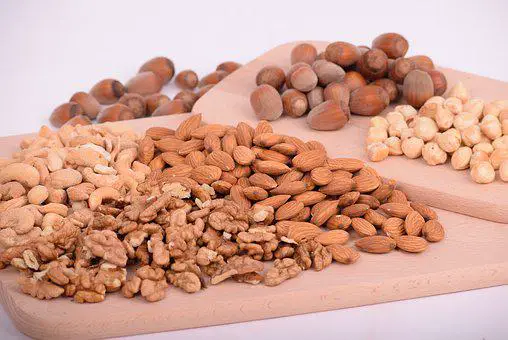
You likely already know that almonds are available in numerous forms other than whole nuts. Here are some of the most common varieties of almonds, along with their suitability for a low-FODMAP diet.
Almond milk has a low FODMAP content. This may surprise you, as you would expect almond milk to contain a substantial amount of almonds. Almond milk, on the other hand, typically contains 2 to 5% almonds. The remainder consists of water.
A 200ml glass of almond milk with 5% almonds is a low FODMAP food.
Consider, however, that when you make almond milk at home, there are typically many more almonds present. It can reach up to 20 percent, which means you will need to consume much less food.
If consumed in moderation, almond butter can be low in FODMAPs. To maintain a low FODMAP level, consume no more than 1 tablespoon per serving. Most nut butter, including peanut butter, behave similarly.
Almond meal is made using ground almonds. Some people use the term to refer to both almond flour and almond meal, while others believe they are distinct. Sweet almonds, with or without their skins, are ground into almond meals. Almond flour is produced from blanched, unskinned ground almonds. There is no evidence that the method alters the quantity of FODMAPs. A 1/4-cup serving of almond meal is low in FODMAPs, whereas a 1/2-cup serving is high in FODMAPs.
FODMAPs are all short-chain, easily digestible carbohydrates. Because there are no carbohydrates in pure oils, like almond oil, they are all low in FODMAPs.
However, ensure that the oil does not contain garlic or onion, which are high in FODMAPs.
Almond extract is a common flavoring for baked goods and other foods. It is composed of water, almond oil, and ethanol.
Almond extract is derived from FODMAP-free almond oil. In addition, only a few drops are required. So, it is safe to say that almond extract doesn’t have any FODMAPs in it.
All things are great but in moderation. For a low FODMAP diet, pay attention to the size of the serving and the ingredients in almond-based products.
Almonds are safe for individuals with IBS. However, remember that portions should be small. Each portion should only contain six to eight whole almonds.
They are high in FODMAPs and should not be consumed in large quantities, but they also contain healthy fats that promote gut health.
Now that you know almonds are low fodmap, get creative in the kitchen and enjoy!
18 · ·
If you’ve recently been diagnosed with IBS or another inflammatory digestive condition, it’s understandable that you’d want to follow a low FODMAP diet. Flare-ups are excruciating, and you want to prevent them at all costs. How about mushrooms? Are mushrooms low fodmap?
You’ve probably observed that mushrooms are naturally classified as a high FODMAP item. This classification has a major flaw: mushrooms exist in many shapes, sizes, and variations. Each mushroom has a different digestive tract passage and affects your gut in different ways.
Yes, certain mushrooms have a lot of FODMAPs, but some don’t. Here’s a quick approach to determining whether or not those mushrooms are FODMAP friendly. Mushrooms are high in fiber, have a low-fat content, and have no cholesterol.
Monash University in Australia is one of the leading research institutions examining the FODMAP qualities of foods in the world. According to Monash University’s FODMAP research, not all types of mushrooms are off-limits.
Even in numerous servings, some are still low FODMAP options! We looked into the Monash FODMAP research and compiled information about several mushrooms below. You may always use the Monash App to identify which foods are low in FODMAPs and which are high. Which mushrooms are FODMAP-friendly and which should be avoided entirely are listed below?
Even if you’re disappointed that you won’t be able to eat some of your favorite mushroom-based delicacies, you may get enthusiastic again since there are a few species of these umbrella fungi that work in low fodmap diets.
Here are some mushrooms that are low in FODMAPs:
Because of their rich, buttery, meaty flavor, shiitake mushrooms are utilized in most Eastern Asian cuisines. One serving is four mushrooms, and a half serving is two mushrooms, according to the MONASH University FODMAP testing. Shiitake mushrooms, however, are high in Polyol-mannitol, which implies they’re high in FODMAP in both servings.
When shiitake mushrooms are dried, their flavor becomes smokey and deep. Drying them boosts their overall nutritional worth, making them even more potent. A serving of dried shiitake mushrooms, on the other hand, is still high in FODMAPs, while a half portion is low in FODMAPs.
Button mushrooms are utilized in cooking and sauces because of their delicate flavor and pure white color. A cup is a serving, although it has a high FODMAP content. FODMAP levels are considerable even in a half-serving of button mushrooms.
Enoki is long, thin mushrooms that are also called enokitake. They are often used in soups and salads. Both a single serving and a half serving of these mushrooms are high in FODMAPs, so you should stay away from them.
Even though these mushrooms are low in FODMAPs, they can still have an impact on your gut health and can be hazardous on a FODMAP exclusion diet. The most important factor is portion sizes.
People frequently overeat these mushrooms because they believe they are harmless, which is partially accurate. However, overeating anything can be dangerous, especially if you already have a health problem.
They have more vitamin and mineral content than nearly any other vegetable, including Niacin, B1, phosphorus, potassium, copper, and iron. They were regarded to have magical properties by the ancient Egyptians, and they were employed for health purposes by the Chinese. Overall, they’re a formidable little fungus.
However, are mushrooms low in FODMAPs? The majority of the time, the answer is no. Most mushrooms are rich in FODMAPs, but it’s not as simple as that; depending on your IBS triggers and serving size, some species may be good for you to eat.
The majority of low FODMAP mushroom alternatives necessitate portion restriction. Serving the size of 1 cup oyster mushrooms and 12 cups canned mushrooms, for example, should be the maximum.
When dried, Shiitake and Porcini mushrooms have a low FODMAP content. It gets complicated because the optimum serving size for low FODMAP is 2 shiitake dry mushrooms (approximately 7g). Anything more will raise the FODMAP level.
Porcini mushrooms necessitate considerably more precision. Only when dried and in 1 tbsp portions are they safe. FODMAP levels above that range from moderate to high.
The fact that oyster mushrooms contain an all-time low level of 75g mannitol per cup is the main reason they fall into the low FODMAP category. This is substantially lower than the complete list of edible mushrooms, which have far higher mannitol and fructose levels.
The king, phoenix, pink, blue, golden, and pearl oyster mushrooms are among the low FODMAP mushrooms identified by Monash University. The type of low FODMAP food isn’t always indicated.
The most important thing is that the oyster mushrooms are fresh. Dried oyster mushrooms have not been studied. Still, given the evidence that shiitake and porcini mushrooms are low FODMAP when dried, it only seems reasonable that oyster mushrooms, which are already low FODMAP, would be the same.
You might wonder why canned mushrooms are on the list of foods that are low in FODMAPs. Mushrooms are put in a brine solution when they are canned. Mannitol and fructans are released into the brine and drain out. The mushrooms are mainly free of such components when consumed.
To maintain it low FODMAP, there are a few key items to remember.
1. Purchase champignon mushrooms that are brined.
2. Drain the brine and thoroughly rinse the mushrooms in clean, fresh water.
3. Stick to a serving size of 12 cups. Anything more will raise the FODMAP level.
There is currently no evidence that cooking reduces FODMAP levels in food. You can cook using one of the low FODMAP mushroom kinds and stick to the serving sizes.
The concept behind avoiding high FODMAP foods is that you’re still eating the components they contain. Because the mannitol, sorbitol, and fructose, cook into the dish, this is the case. Heat does not appear to diminish or remove these components from mushrooms, according to a study.
There is anything you may swap for mushrooms in your meals on an elimination diet, other than using the necessary servings of low FODMAP mushroom alternatives.
That would be eggplants, specifically roasted eggplants. They’re a great low-FODMAP alternative to mushrooms that may be used in similar methods and meals. Eggplants are very similar in texture to mushrooms, making them perfect substitutes if you need to eliminate the fungi. So, are mushrooms FODMAP-friendly?
Mushrooms are often high in FODMAP because of their high mannitol content. Oyster mushrooms are examples of mushrooms that operate well on a low FODMAP diet. However, watch serving sizes and seek medical advice if you have gastrointestinal problems.
0 · ·
It can be difficult to find foods that are low in FODMAPs. Frequently, you must either avoid some meals entirely or consume them in modest amounts. As a result, there isn’t much opportunity for variety in your diet. Fortunately, many foods can still be included in a low FODMAP diet. For example, many fruits, such as bananas, are high in nutrients and beneficial to your digestive system. However, Is banana low in FODMAP? Or are they causing IBS symptoms?
Whether you can eat bananas on a low FODMAP diet is very dependent on how ripe they are. The more FODMAPs a banana contains, the riper it is. To avoid any negative effects, patients with IBS should eat green, unripe bananas.
However, if you can stomach small amounts of bananas, you can benefit from their health benefits. Bananas are high in antioxidants and a variety of vitamins and minerals. As a result, eating them can enhance your health and lower your risk of developing certain diseases.
There are about 1000 different species of bananas, however, the Cavendish banana is the most common banana found in supermarkets (and elsewhere) in the United States, and is equivalent to what Monash terms the “common” banana on its smartphone app. It’s simply referred to as a “fresh banana” by FODMAP Friendly.
Cavendish bananas account for about half of global banana production or about 50 billion tonnes. Because of its disease resistance and ability to travel, the Cavendish has grown in favor. Only the types of bananas that have been lab-tested for FODMAPs by Monash University and FODMAP Friendly will be considered.
FODMAP levels in ripe bananas are often fairly high. If your IBS symptoms are severe, it’s best to avoid them. You can eat them in little portions, but only a third of a banana should be consumed in one sitting.
Unripe, green bananas, on the other hand, contain far fewer FODMAPs. On a low FODMAP diet, you can safely have one entire medium-sized banana in one sitting.
Although ripe bananas are rich in FODMAPs, they can still be taken on a low FODMAP diet provided only a little portion is ingested. It is recommended that you eat only 1/3 of a ripe banana in one sitting. You’ll get the wonderful flavor and nutrients while avoiding too many FODMAPs.
You can safely consume the entire fruit of an unripe, green banana in one sitting. Because they contain fewer indigestible carbohydrates, they are less prone to cause digestive problems. Still, limit yourself to one, and don’t overdo it.
FODMAP levels in canned and bottled banana juice are significantly greater than in raw bananas. It frequently has additional sugar, making it even more harmful to your digestive system. Furthermore, most banana juices are produced with overripe bananas, which contain indigestible carbohydrates.
As a result, especially if your IBS is severe, you should limit your banana juice consumption. Green bananas and low-FODMAP almond milk, on the other hand, can be used to produce banana smoothies, according to experts. That way, you can still eat bananas without suffering the repercussions.
Banana bread from the store is typically heavy in FODMAPs and sugars. If you have IBS or any other digestive system problem, you should probably avoid it. Fortunately, there are numerous recipes available online that allow you to prepare your healthy banana bread.
They employ slightly different low-FODMAP components, allowing you to incorporate banana bread into a low-FODMAP diet.
Bananas, like most other fruits, get most of their calories from carbohydrates. While the majority of the carbohydrates in bananas are sugars, one medium banana also contains 3.1 g of fiber, which is 12 percent of your daily required fiber intake.
Starch and resistant starch make up the majority of the fiber in green, unripe bananas. This form of fiber is indigestible, which means it helps food flow through your digestive tract and boosts blood sugar levels.
Soluble fiber, found largely in ripe bananas, dissolves during digestion and aids food passage through the intestines.
These two forms of fiber work together to keep blood sugar levels stable. If you have diabetes, eating moderate portions of bananas regularly can help you manage your symptoms.
Bananas are particularly high in vitamin B6, giving 22 percent of your daily requirement in just one meal. Vitamin B6 has been shown to increase mood and alleviate depressive symptoms. It also benefits your brain and cognitive function, reducing your chances of Alzheimer’s disease and other cognitive diseases.
Anemia can be prevented and treated by getting enough vitamin B6 each day. This is because this vitamin produces hemoglobin in conjunction with iron. As a result, eat enough vitamin B6-rich meals.
Furthermore, bananas are a potassium-rich fruit since they contain a high amount of potassium. This mineral lower blood pressure by counteracting the harmful effects of dietary salt. Potassium also keeps your muscles and nerves in good working order. It’s also necessary for keeping a healthy and consistent cardiac rhythm.
So, unless you have unique potassium-related dietary requirements, it’s critical to consume potassium-rich foods.
Bananas, like other fruits, contain strong plant chemicals and antioxidants. These compounds aid in the elimination of free radicals and poisons from the body. This reduces your chance of chronic diseases like heart disease, diabetes, and even cancer by preventing oxidative damage to your cells.
Antioxidants with anti-inflammatory qualities help reduce your risk of chronic inflammation and other diseases associated with it.
Bananas, particularly ripe bananas, are not recommended for patients with IBS. As a result, if you do decide to eat them, limit yourself to tiny portions or choose green, unripe bananas to avoid digestive issues.
Even during Elimination, you can eat numerous banana varieties and degrees of ripeness. We believe that the reason so many individuals consider bananas to be a “no-no” is that they frequently appear on High FODMAP food lists, which do not take serving size into account.
You must also know how to utilize the Monash app correctly if you use it. Ripe bananas have a big Red Light next to them, suggesting a high FODMAP level, but you have to navigate through the app entry to see the Green Light’s low FODMAP serving sizes.
However, if you can stomach bananas, you should include them in your diet. Fiber, vitamin C, vitamin B6, potassium, and manganese, as well as antioxidants, are abundant in them.
As a result, consuming them can help you avoid a variety of health problems.
0 · ·
Eggplant, or aubergine as it is known in the United Kingdom, is a member of the nightshade family and is related to tomatoes and potatoes. It is commonly regarded as a vegetable, but it is actually a fruit. Because botanically speaking, that is what it is, some people think of it as a berry. Is eggplant low in FODMAP? It does not matter how you choose to classify it; nevertheless, eggplant is low in FODMAPs.
Eggplant is low in FODMAP. In a single cup, eggplant is low in FODMAP according to Monash University. It is medium FODMAP in 2 and a half cups, according to FODMAP Friendly. It was tested as low FODMAP in 75-gram servings by FODMAP Friendly. Low-FODMAP eggplant dip may be found in a serving of 2 tablespoons.

You may find recipes for ganoush (or ghanouj or ghanoush), smoky eggplant dip, moutabal or (moutabel), or eggplant dip roasted, and they may be identical to ours – or different! According to some sources, moutabel should never be made with tahini, yet there are numerous versions that do include it.
It does not matter, because our Low FODMAP Eggplant Dip is made of roasted eggplant, lemon juice, a very small tinch tahini, and garlic-infused oil. Do not forget the salt; it is crucial.
Place the eggplant on a grill or directly in the ashes of a wood fire. If you are grilling, use it to roast the entire eggplant. You may even nestle the eggplant in amongst the coals.
Your dish will also work if you are operating inside your oven. Use a high temperature and roast until wrinkled and soft, usually between 45 minutes and 1 hour.
The star of our Low FODMAP Eggplant Dip is eggplant! Are you wondering if eggplant is low in FODMAP?
Eggplant (also known as aubergine) has been lab-tested by both Monash University and FODMAP Friendly and has been found to be low in FODMAPs in 1 cup (75 g) servings.
Monash University informs us that eggplant becomes very close to moderate for FODMAPs at 2.5 cups (182 g) and High for FODMAPs at 4.0 cups (260 g). According to Monash, eggplant contains sorbitol. It is gluten-free, low-carbohydrate, high in potassium, and contains fructans and a little GOS, according to FODMAP Friendly.

Eggplant may be cooked in a variety of ways, as it is quite adaptable. It can be used as the centerpiece of a full dinner or as a side dish.
Eggplant wedges are a wonderful low FODMAP side dish. This recipe serves six people.
Homemade eggplant parmesan is a well-known vegetarian favorite, so here is a low FODMAP version that you can make at home. This dish feeds six people.
The delicious Low FODMAP Eggplant Dip is only as good as the eggplant it is made with. The key to its success is properly cooked eggplant. Just make sure the eggplant is fully soft before cooking it. Within its skin, it should be almost liquid. When I cut into it, you can see that the inner flesh is soft and squirting out of the skin on the upper right. It separates rather easily from the skin, which you can observe in this photo on the top right.
Mashing the eggplant in a bowl by hand appeals to me. The rougher texture that results rings my bells. If you want a smoother texture, process it in a food processor using a metal blade.
Similar Articles
0 · ·
Following a low FODMAP diet necessitates extensive research and understanding of the nutritional contents of the items you eat. This is critical, especially if you have IBS because FODMAPs can cause a variety of unpleasant symptoms. Most veggies are low in FODMAPS; however, others may have a greater concentration of this type of indigestible starch. Chickpeas, for example, are a legume with high FODMAP content. Why not try chickpeas? Are chickpeas low FODMAP?
When it comes to FODMAPs, chickpeas are high in both raw and cooked forms. This means that eating too many of them can trigger IBS symptoms and other digestive system problems. On a low FODMAP diet, you may want to limit your consumption of this variety of legumes.
If you can handle tiny amounts of chickpeas, on the other hand, they can help you avoid vitamin and mineral deficits. They’re also high in plant chemicals and fiber, making them good for your health.
Chickpeas are a legume that is commonly grown throughout North America, Asia, Australia, and other parts of Europe. India produces roughly two-thirds of all the world’s goods! Chickpeas are a high-protein, high-fiber food that should be included in your diet. They’re also high in protein, so vegans may rely on them.
FODMAPs are abundant in all dried legumes and beans that must be soaked and cooked before eating. On a low FODMAP diet, chickpeas are generally not suggested, especially if your IBS symptoms are severe.
However, some persons may be able to consume some in modest portions. But make sure you’re only eating around two tablespoons of cooked chickpeas at a time. On a low FODMAP diet, eating more than that can create stomach problems.
1. Chickpeas are not only tasty and adaptable, but they’re also high in nutrients. For example, a 12-cup portion of cooked chickpeas contains 6.3 g of fiber, which is 25% of your daily fiber requirement. As a result, eating chickpeas keeps you satisfied and reduces overeating. As a result, including chickpeas in your diet can help you lose weight quickly and easily.
2. Furthermore, the same portion contains 7.4 g of protein, which is about 15% of your daily requirement. Chickpea protein aids in the fueling of muscles and the development of lean muscular mass. As a result, chickpeas are frequently recommended as a plant-based protein source.
3. Chickpeas also provide folate, generally known as vitamin B9, in a single meal. This vitamin is necessary for red blood cell production. It also aids in the growth and maintenance of your cells, as well as the proper development of your baby during pregnancy.
4. Chickpeas are also a good source of iron, which is necessary for the synthesis of hemoglobin. This protein aids in the transportation of oxygen throughout the body, lowering the risk of anemia and other cardiovascular problems. People who do not eat meat are frequently iron deficient. As a result, eating chickpeas can make up for the iron they don’t get from animal sources.
5. Chickpeas also have high magnesium, phosphorus, and manganese content. These three minerals are beneficial to bone health because they lower the risk of fractures and osteoporosis. Unfortunately, many people today are deficient in vitamins and minerals. As a result, consuming vitamin- and mineral-rich foods in your diet can help you avoid these problems.
6. Chickpeas are high in micronutrients and have a low glycemic index (GI). As a result, eating them can help control your blood sugar levels, lowering your risk of diabetes. Chickpeas’ capacity to lower blood sugar levels has been linked to a lower risk of high cholesterol and heart disease in studies.
7. Chickpeas also provide a good source of strong plant chemicals. Some of them contain anti-cancer and anti-inflammatory qualities, which means they lower your risk of cancer by inhibiting tumor formation. Several vitamins and minerals present in chickpeas have been linked to a lower risk of breast and lung cancer in the same way.
8. Choline is another plant component abundant in chickpeas. This substance is critical for brain and nervous system function, as well as lowering the risk of cognitive impairment. Getting enough choline may also help with sadness and anxiety symptoms.
On a low FODMAP diet, chickpeas can be included as long as you stick to the suggested serving sizes. So, in a single serving, make sure to add roughly two tablespoons of chickpeas. This may seem insignificant, but adding chickpeas to salads or larger foods can provide numerous health advantages, including vitamins, minerals, and antioxidants.
You can eat canned chickpeas and other types of legumes if your digestive system doesn’t tolerate them. Because most of the indigestible carbs leach into the brine, these have reduced FODMAPs. You should be able to include canned chickpeas in your low FODMAP diet if you eat drained solids.
FODMAPs are lower in canned chickpeas than in cooked chickpeas. This is because when chickpeas are canned, a considerable part of the FODMAPs contains leach into the brine. So, you’re not absorbing as many FODMAPs when you drain them and pour out the brine.
Canned chickpeas are still high in nutrients and can be used to substitute cooked chickpeas in any balanced diet. Just keep an eye out for ones that have extra sugars or salt, as they are less healthful.
FODMAPs are leached out of canned chickpeas since they are stored in the water while in the can. If you do opt to use canned chickpeas, make sure to properly wash them to remove any high FODMAP water.
Chickpeas have an amber FODMAP rating when ingested in the Monash-advised portion size. This indicates that chickpeas can be eaten in moderation on the low FODMAP diet, but you should avoid eating numerous ‘amber’ items at once.
On a low FODMAP, IBS-friendly diet, cooked chickpeas should be limited or avoided due to their high FODMAP content. If you do decide to eat chickpeas, limit yourself to a small serving to minimize digestive problems. You can also eat canned chickpeas, which contain fewer FODMAPs.
However, eating chickpeas is helpful. They’re high in vitamins and minerals, so including them in your diet can help you avoid micronutrient shortages. As a result, including chickpeas in your meals is a good idea.
0 · ·
One serving size of sunflower seeds (5 grams or two and a half teaspoons of hulled seeds) is low in FODMAP, according to the Monash University low FODMAP diet app. If you follow a low-FODMAP diet, sunflower seeds are a wonderful alternative.
Sunflower seeds, like other low FODMAP legumes, can cause bloating in people who consume them in excessive quantities. This is due to the high amount of fiber and oligofructose contained within. If you have gastrointestinal problems such as gas or bloatedness, sunflower seeds should be consumed sparingly. Even though they are low FODMAP foods that are safe for IBS, sunflower seeds are not suggested if you have an allergy or intolerance to them.
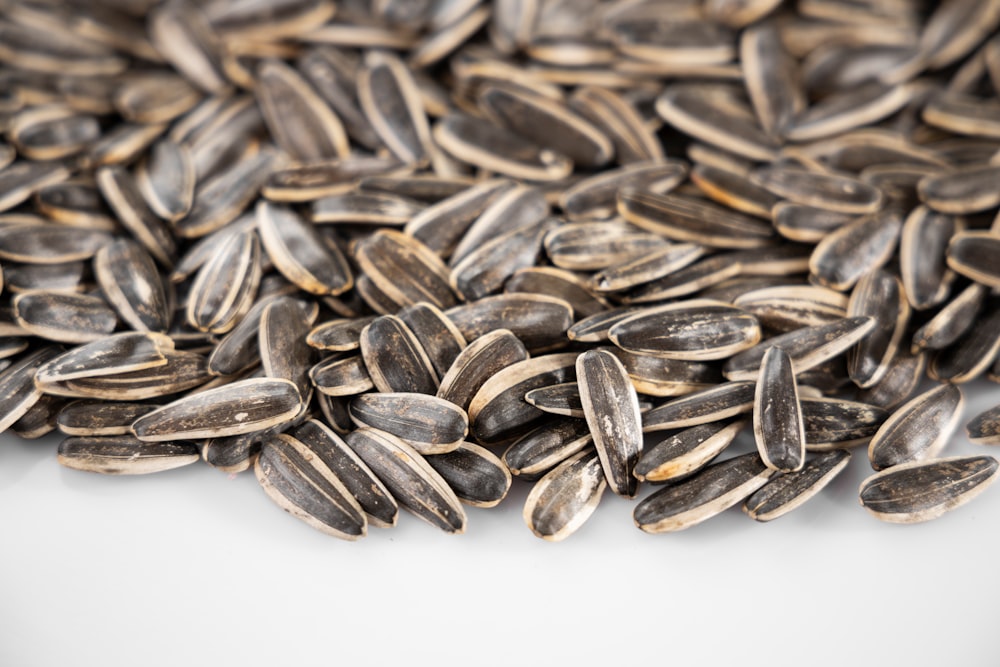
We have the ideal recipe for you if you are searching for a quick and simple way to eat sunflower seeds! These low FODMAP sunflower seed bars are not only delectable, but they are also nutritional and healthy.
Ingredients:
Instructions:

Sunflower seeds are a rich source of vitamin E and selenium, as well as cholesterol-lowering compounds known as phytosterols. Sunflower seed butter is high in heart-healthy fats, protein, fiber, and vitamins A and D. It can be used to make low FODMAP nut butter or spreads for sandwiches. The recommended serving size is 2 tablespoons.
Note on sunflower seeds: I contacted the Monash team to find out what the FODMAP threshold levels are for sunflower seeds. “For sunflower seeds, the recommended dangerous serve is 50g of seeds. 70g is when sunflower seeds become high in FODMAPs. A moderate FODMAP serve of 60g of sunflower seeds is a little over 2 tablespoons (32.3g).” This implies that a tiny 2 tablespoon (32.3g) serving of sunflower seed spread is low-FODMAP.
Sunflower seeds are a nutritious, textured addition to salads and soups, and they’re quite adaptable. However, can you have sunflower seeds on a low FODMAP diet?
Sunflower seeds are a simple way to add flavor and texture to salads and soups. You now know that sunflower seeds are low in FODMAP, which means you can add them to your diet with confidence. It does not, however, end there. We have covered everything you need to know about the sunflower seeds (as well as some other popular sunflower seeds), including the portion sizes and some suggestions for using them in your recipes to make things a little more interesting.
In general, a 2tbsps portion of sunflower seeds is safe. According to Monash University, up to 50g of sunflower seeds is low in FODMAP. When you bump this up by 10g to 60g, it becomes moderate in FODMAPs. Another 10g would also result in excessively high FODMAP levels. It is all about balance when it comes to portion control; keep an eye on your daily 50g limit every day.
Take advantage of any little victories as you follow a low FODMAP diet. Eating sunflower seeds is a tiny win because they are so adaptable and may be used to spice up many different meals. When it comes to using sunflower seeds, there are several choices:
Sprinkle on Cakes – Yes, you can sprinkle sunflower seeds on your cakes to make them look more attractive. Sprinkle your cakes with a few sprinkles for the final few minutes of baking to give them a crunchy, nutty taste.
Add to Vegetables – Toasted sunflower seeds may transform your buttered greens from being another uninteresting plate of veggies to the star of your next dinner. Sunflower seeds complement a variety of vegetables, including asparagus and cauliflower, as well as carrots and broccoli. Do not be hesitant!
Stir into Cereal – Sunflower seeds are high in vitamins E and antioxidants, making them an excellent addition to any morning breakfast bowl, whether it is made with homemade low FODMAP shop-bought or granola gluten-free cornflakes.
Use them in Pesto – Pesto is traditionally prepared with pine nuts. If you use a lot of pine nuts, they can be expensive and high in FODMAPs. So why not give sunflower seeds a try instead?
Mix into Salads – Salads can be a little tedious to eat every day for lunch, especially if you have been doing it for years. To add a nutty flavor and crispy texture to your salad, toast a handful of sunflower seeds then stir them in. It will instantly upgrade the quality of your low FODMAP meal.
Sunflower seeds are high in dietary fiber and have antioxidants that may help prevent the development of cancer. They are also chock-full of vitamins and minerals, including vitamin E and selenium, which are good for your immune system! This snack’s high protein content makes it perfect for vegans or vegetarians who wish to add some meatless protein to their diet.
Since ancient times, sunflowers have been cultivated. The seeds are taken from the sunflower head after it has ripened and dried out on its stalk for many weeks or months (depending on your climate). These are frequently found in supermarkets as well as health food shops like Whole Foods Market or Trader Joe’s.
Sunflowers are a member of the daisy family, which is closely related to ragweed. Because of this, if you are allergic to ragweed pollen, you might be allergic to sunflower seeds as well. If you are not sure whether you are sensitive or not, it is best to avoid eating them until you have spoken with your doctor. Sunflower seeds can be used in salads and other meals, and they are popular snack food. They are commonly eaten raw or roasted but may also be sprouted.
Similar Articles
0 · ·
If you are anything like me, enjoying a treat every now and then is relaxing! However, determining which sugars and sweeteners are low in FODMAP can be difficult. This definitive guide to low FODMAP Sweeteners, Syrups & Sweets will help you pick the correct sweetening agent.
Before we begin, it is critical to note that only extra fructose is malabsorbed. This means that standard sugars and sweeteners with equal amounts of glucose and fructose are typically well-tolerated on the low FODMAP diet. Remember also that any sugar or sweetener should be consumed in moderation. So, for example, limit yourself to one piece of baking at a time!

The first thing to understand is that when we talk about sugar and the low FODMAP diet, we are talking about “sucrose.”
Sucrose is a disaccharide, which is a fancy word for a chemical containing two molecules joined together. “Disaccharides” may sound familiar since they are the “D” in FODMAP. But, just like when people refer to lactose as a “disaccharide,” the low FODMAP diet only takes into account one disaccharide – lactose. So stay calm, my friend; we are still good!
The second thing you should know is that sucrose is composed of one glucose and one fructose molecule. Did your hair on the back of your neck stand up? Do not be alarmed, dear friend! I am here for you!
During the low FODMAP diet’s elimination phase, you are seeking two forms of fructose. Fructose that is floating around on its own (as in fruit or as a supplementary sweetener) and fructose that “exceeds glucose” are examples of the latter. Stated, that there is more fructose than glucose in a product (such as high fructose corn syrup).
The good news is that because sucrose is composed of equal parts glucose and fructose, it is low in FODMAP.

Beet sugar is made from sugar beets and contains less than one percent FODMAP. This sugar is cultivated from sugar beet plants and is one of the most popular sources of table sugar (the second most common source being sugar cane). This substance consists of a 50/50 ratio of glucose and fructose, which means it can be eaten in moderation. Because beet sugar is a type of white refined Sugar, the low serving size of FODMAP would be two tablespoons.
Brown sugar is a type of refined, crystalline sucrose combined with limited amounts of molasses that gives the sugar its brown color. This sugar is made by combining refined white sugar with traces of molasses. This results in brown sugar being a crystalline form of sucrose with small amounts of molasses added. According to Monash University’s research, one tablespoon of brown sugar is Low in FODMAP. Brown sugar has a wonderful rich taste and a slight caramel aftertaste.
Cane sugar is made from sugar cane and accounts for the majority of white sugar produced. Because cane sugar is a type of white sugar, the suggested serving size is 1 tablespoon.
Coconut sugar is a different type of sugar extracted from the flower sap of the coconut palm, unlike palm sugar, which comes from the date palm (Carr, 2014). According to Monash University and FODMAP Friendly coconut sugar is low FODMAP in 1 teaspoon serves, but larger servings (3 teaspoons) are high FODMAP for fructans.
Coconut sugar is a good source of potassium and magnesium, as well as vitamin B2. Coconut sugar has inulin, which is a prebiotic that nourishes the bacteria in our guts. The gas produced by the bacteria when they ferment inulin creates Irritable Bowel Syndrome symptoms. Inulin is classified as a fructan and has a high FODMAP level.
Table sugar, commonly known as refined sugar or granulated sugar, is a white crystal that occurs naturally in the human body and is used to sweeten baked goods and drinks. It is extracted from sugar cane or beet juice while it is being boiled. Sucrose is a disaccharide of fructose and glucose that has a crystalline structure.
Table sugar is a familiar sweetener that comes in various forms, including white sugar, raw sugar, caster sugar, and icing sugar (powdered confectioners’/sugar). When making icing with icing sugar, make sure it has not been refined with wheat products since this can be high FODMAP. One tablespoon of common table sugar has a low FODMAP serving size.
Like other carbohydrates (sucrose, lactose), is a type of crystalline glucose formed from starch. Dextrose is low FODMAP because it is made from glucose.
Fructose, on the other hand, is frequently known as fruit sugar. We recommend avoiding any product that includes the word “fruit” in its ingredients.
Excess fructose should be avoided, whether it is in the form of fructose isolate, fructose syrup, fructose, sugar, or crystalline fructose. Any ingredient containing the term “fructose” should be avoided since they will have an excessive amount of it.
This is produced from the plant Palmyra palm, date palms (including sugar and date), Nipa palms, or Arenga pinnata or sugar palm. Palm sugar has low fructose levels which are between 10% and 20%, which is less than ordinary table sugar with a fructose level of 50%. This sugar differs from coconut sugar in that one tablespoon of palm sugar is considered low FODMAP by Monash University. Palm sugar has an earthy and nutty sweet aftertaste with a caramel flavor.
Sucrose, like all carbohydrates, is composed of two sugars: glucose and fructose (1 glucose + 1 fructose = 1 sucrose).
This is significant because glucose molecules are absorbed into the circulation via two distinct transporters: SGLT-2 and GLUT-1. Glucose and fructose molecules may be coupled together by the use of the GLUT-2 shuttle bus, allowing fructose to enter the circulation. When you consume meals with an equal proportion of glucose and fructose, your body absorbs this way.
Because there is not enough fructose to go around in your intestines, sucrose is considered low FODMAP. The sweet tooth rejoices!
Is there a limitation to how much sugar you can eat on the low FODMAP diet if fructose is properly absorbed? Most sugars have a suggested serving size of 40-50 g or approximately 1/4 cup according to the Monash University app. However, this limit is determined by the current Australian guideline for diet, not by the FODMAP content.
Similar Articles